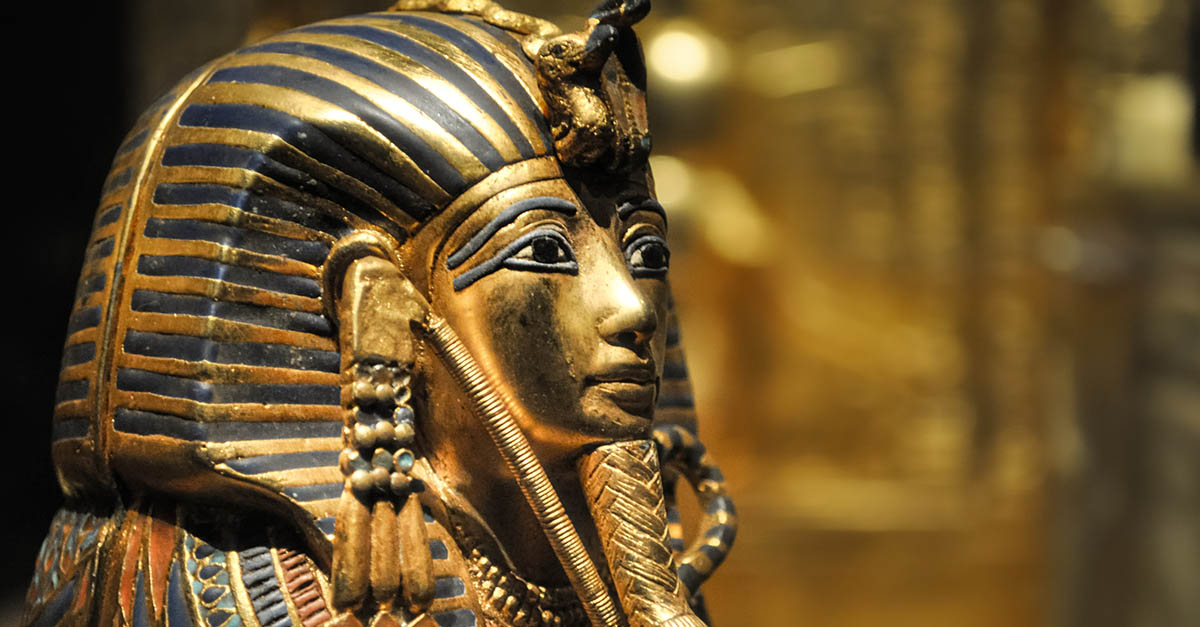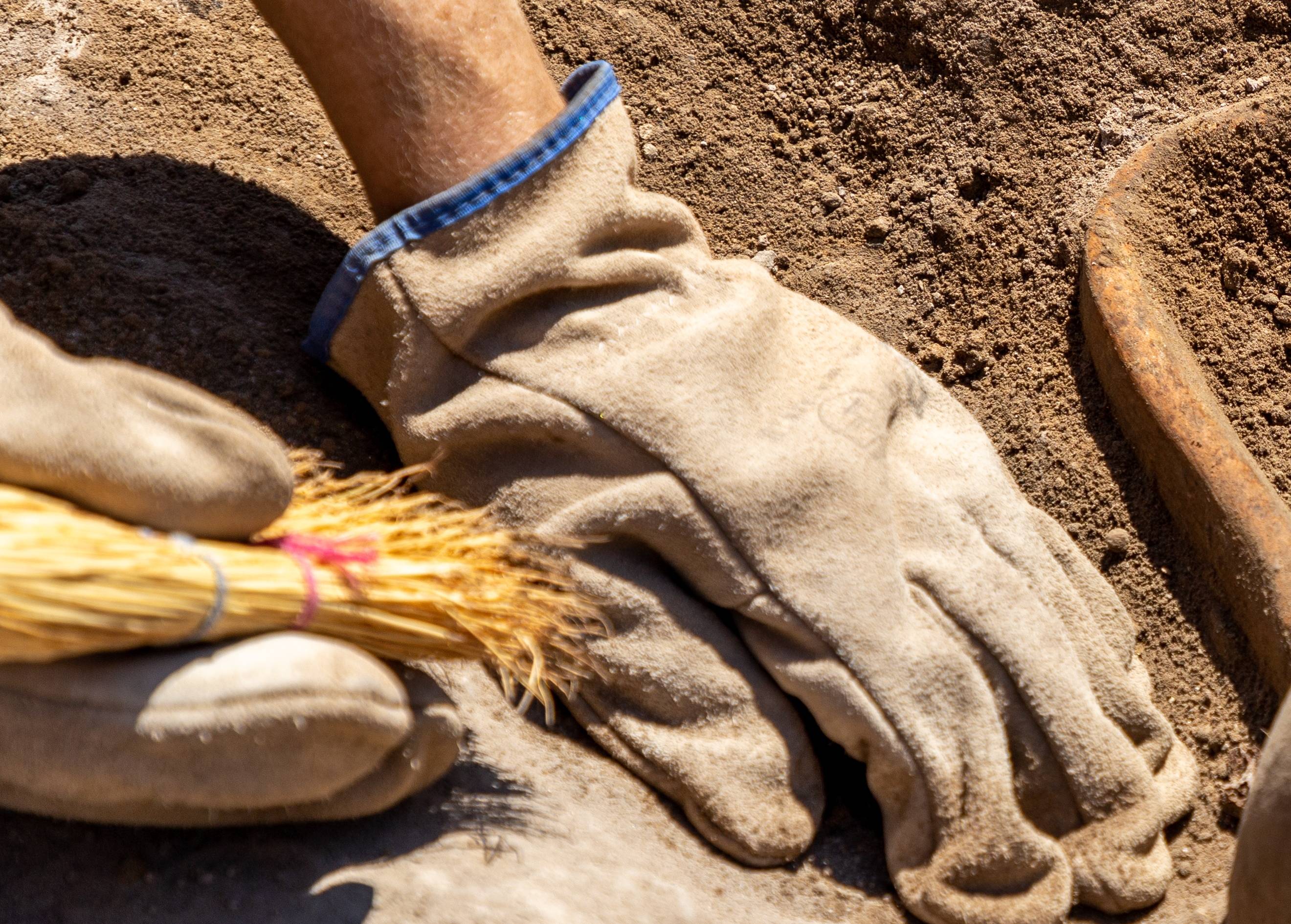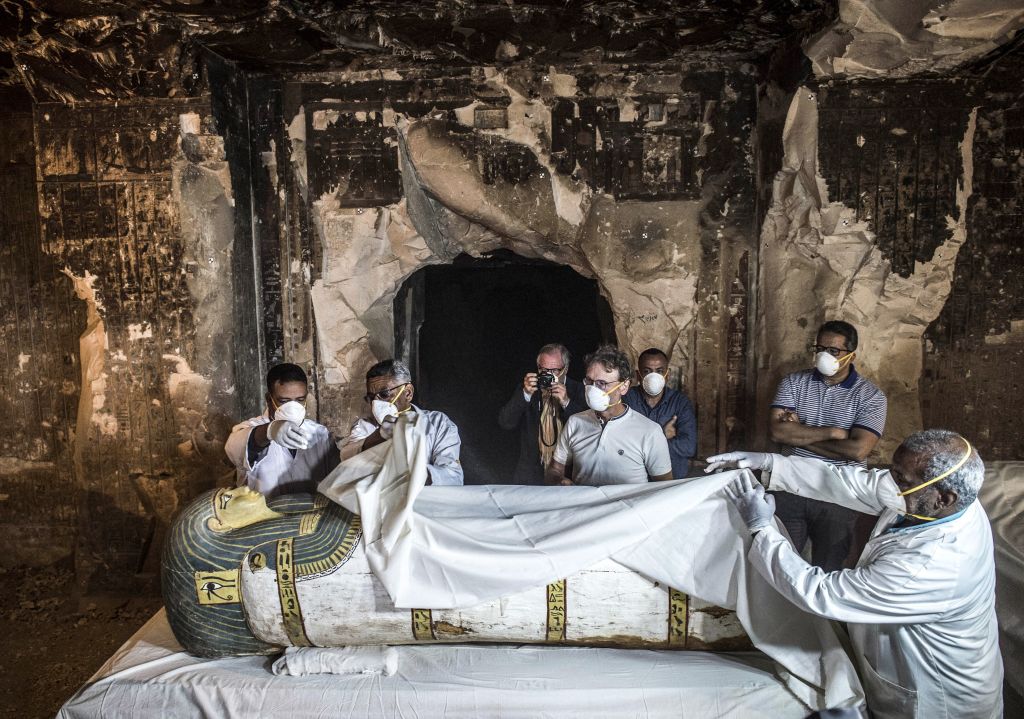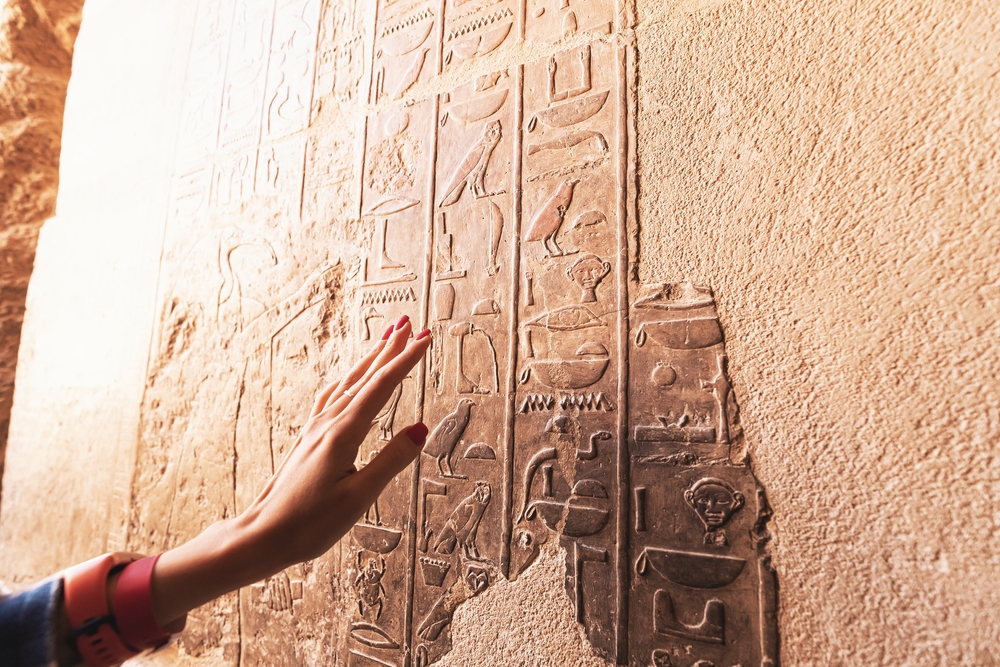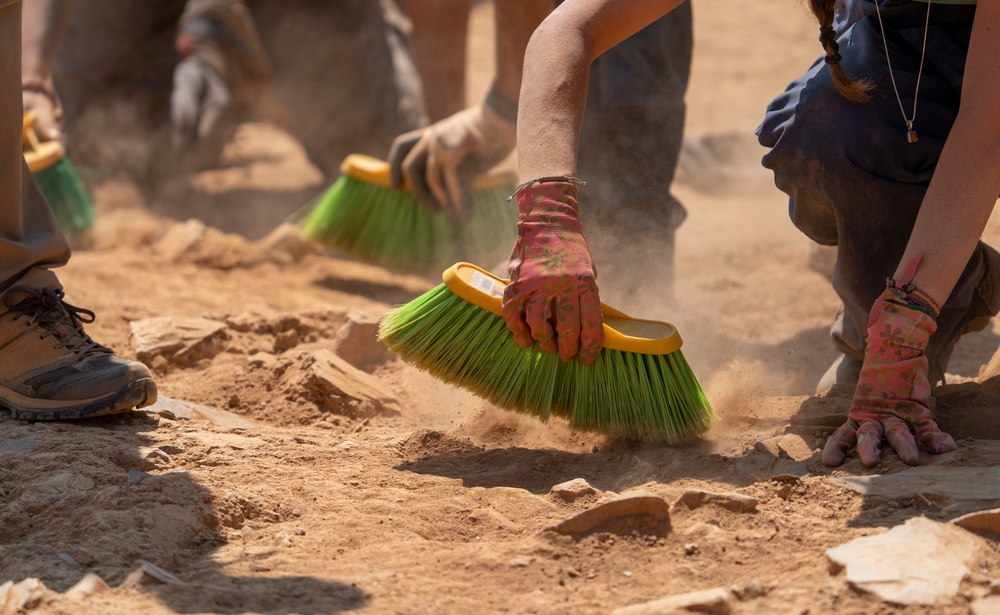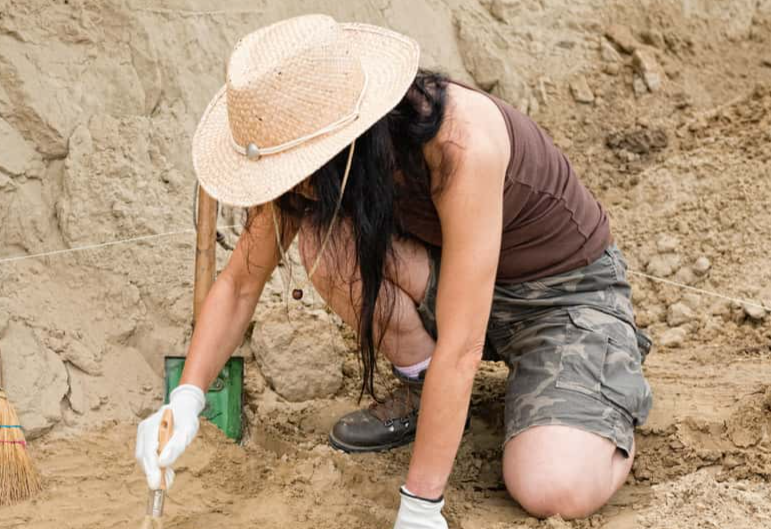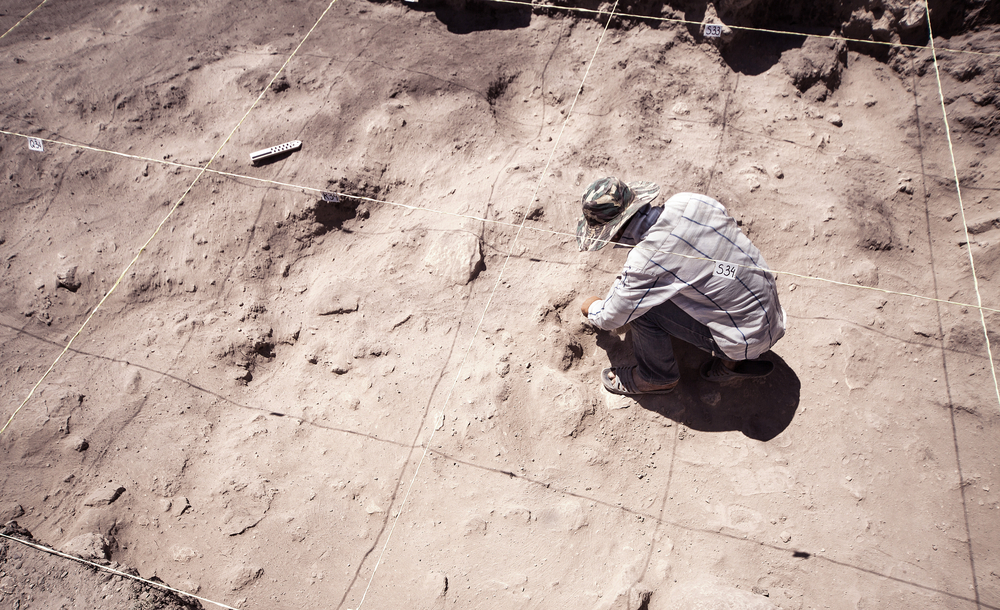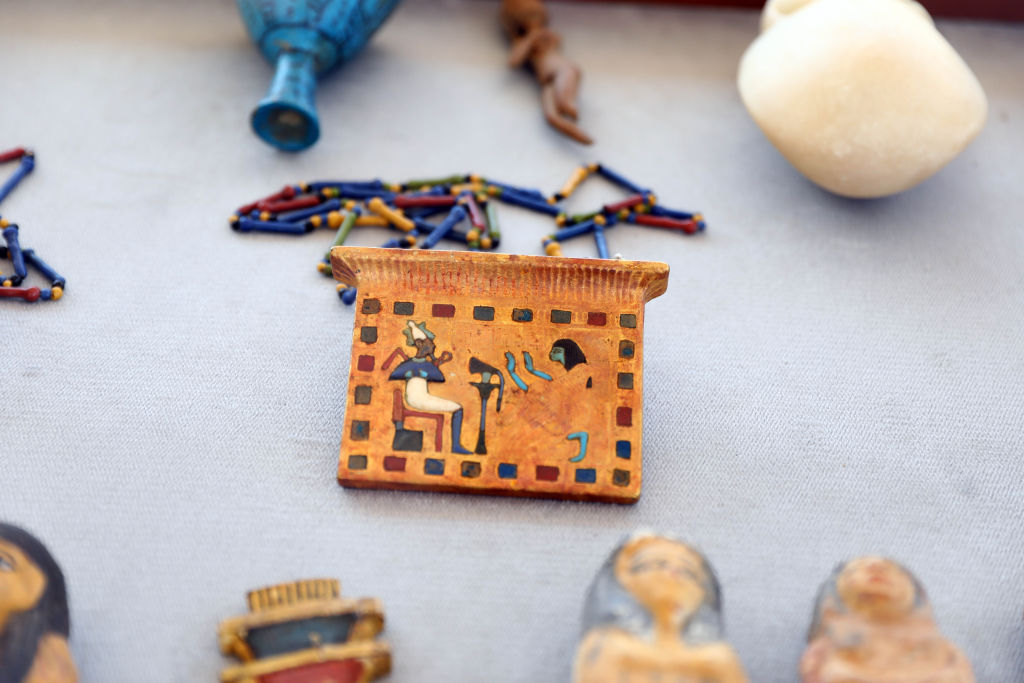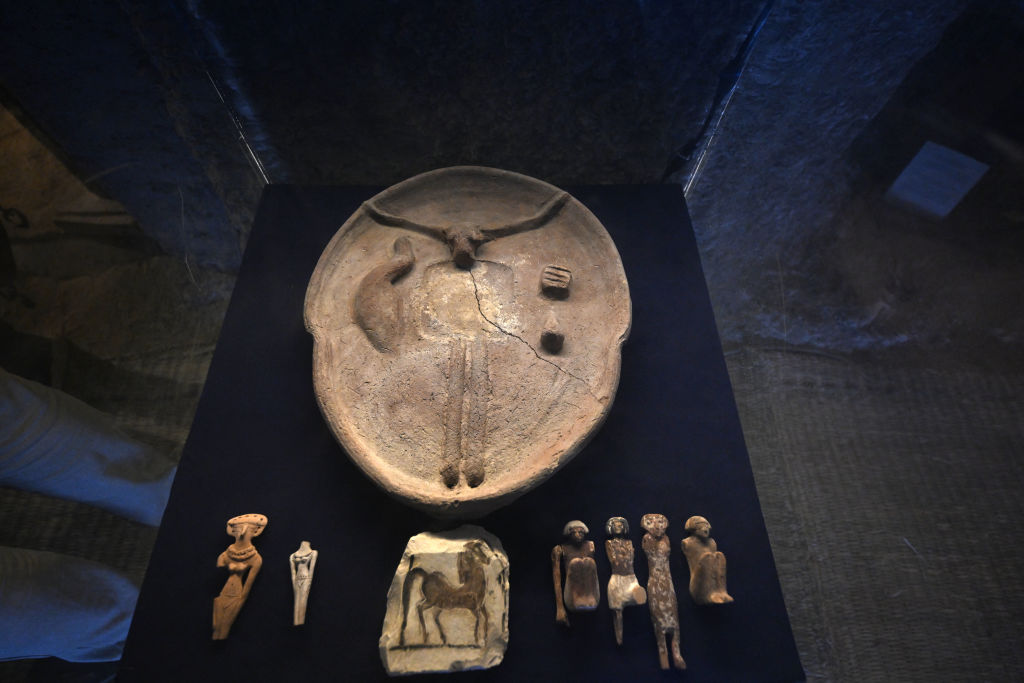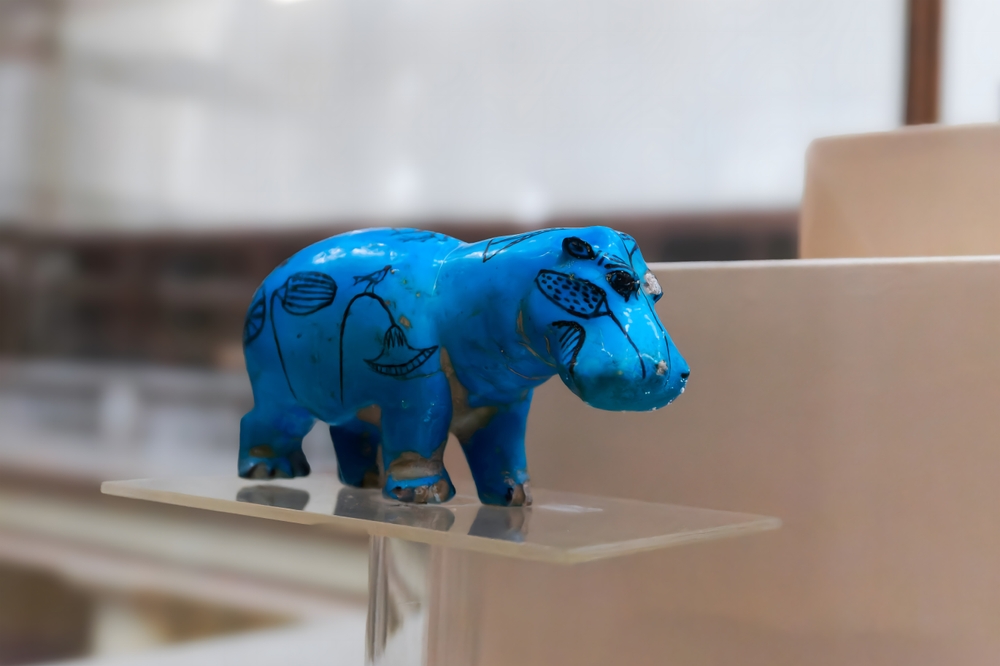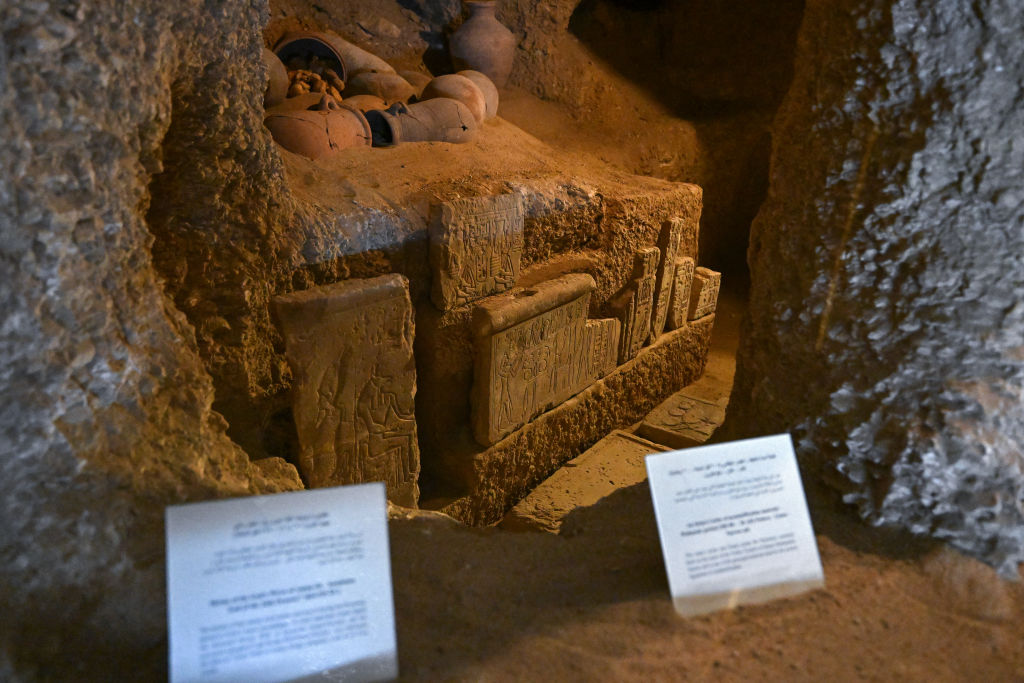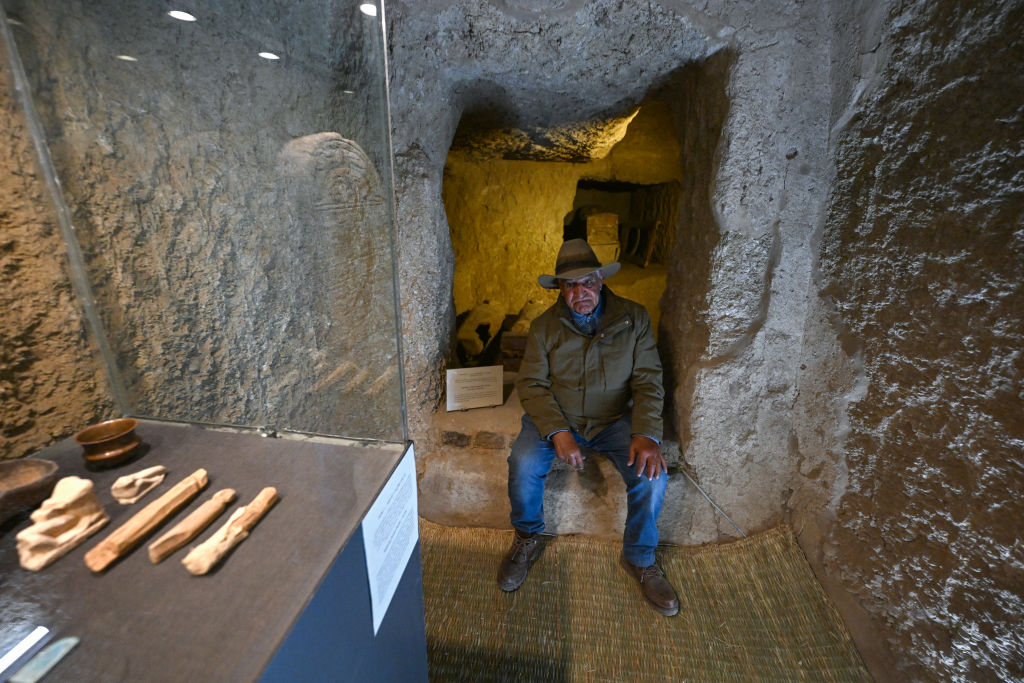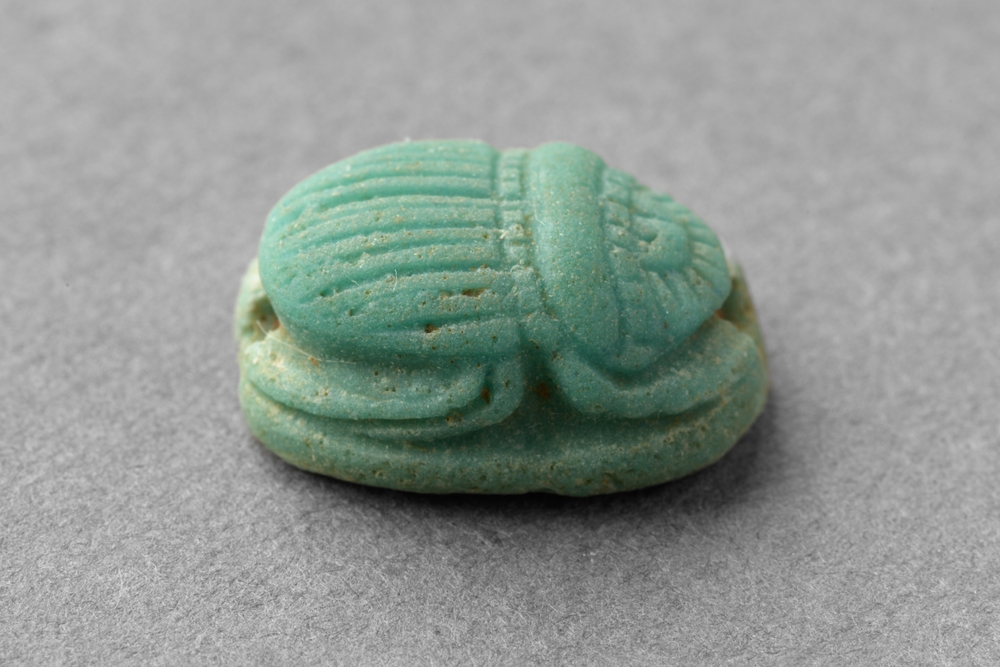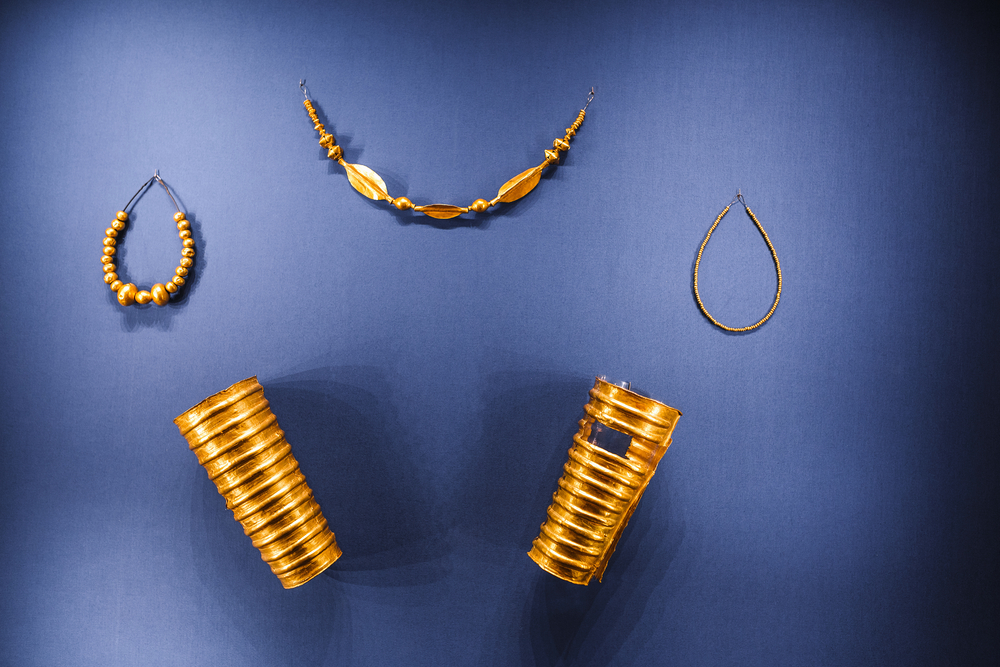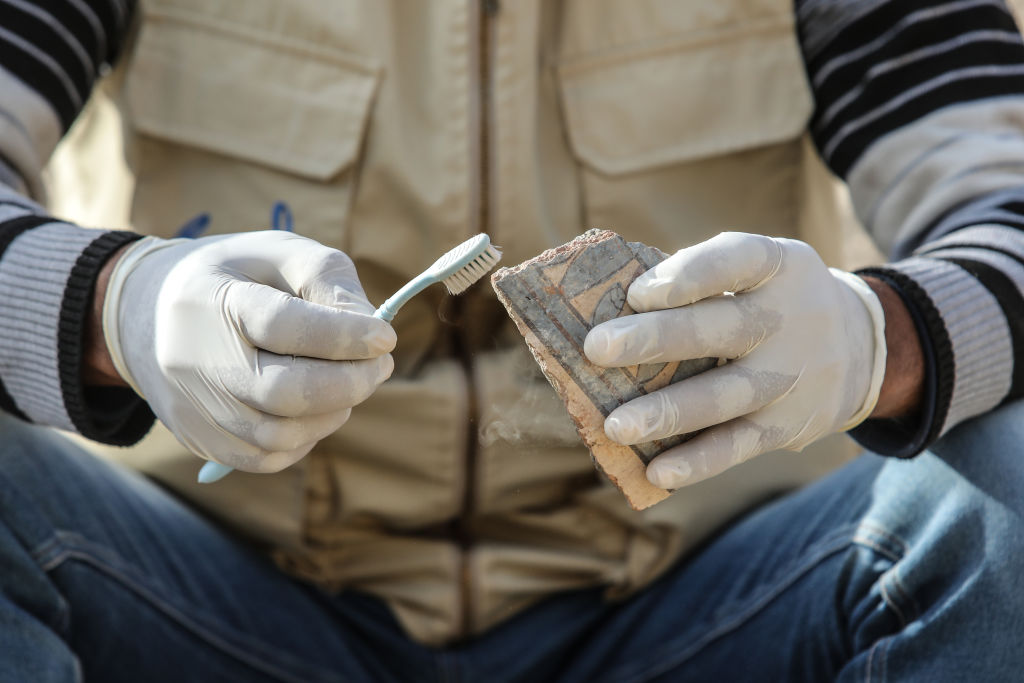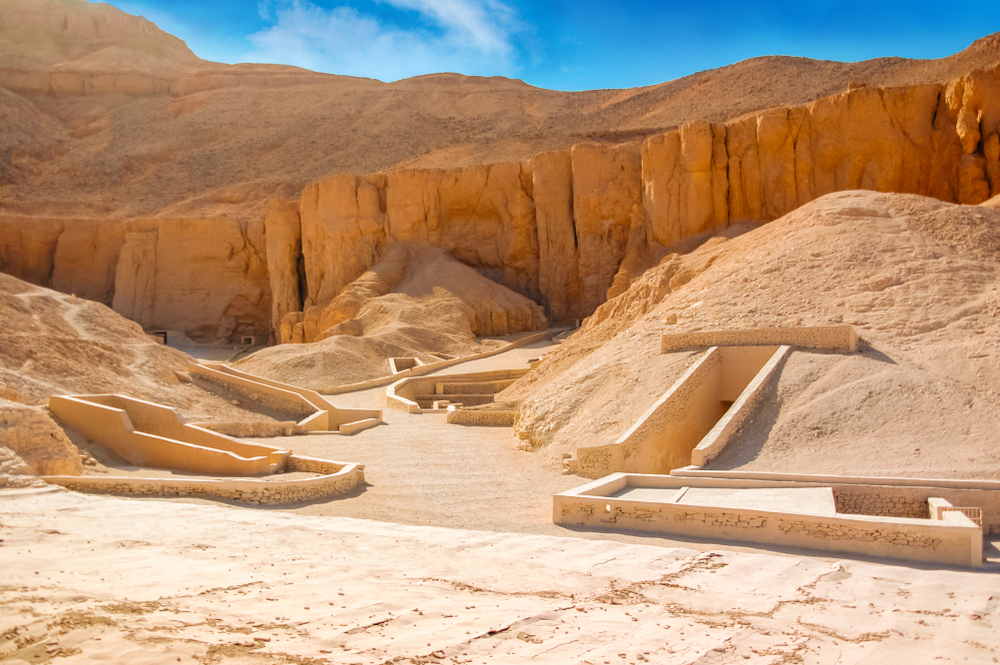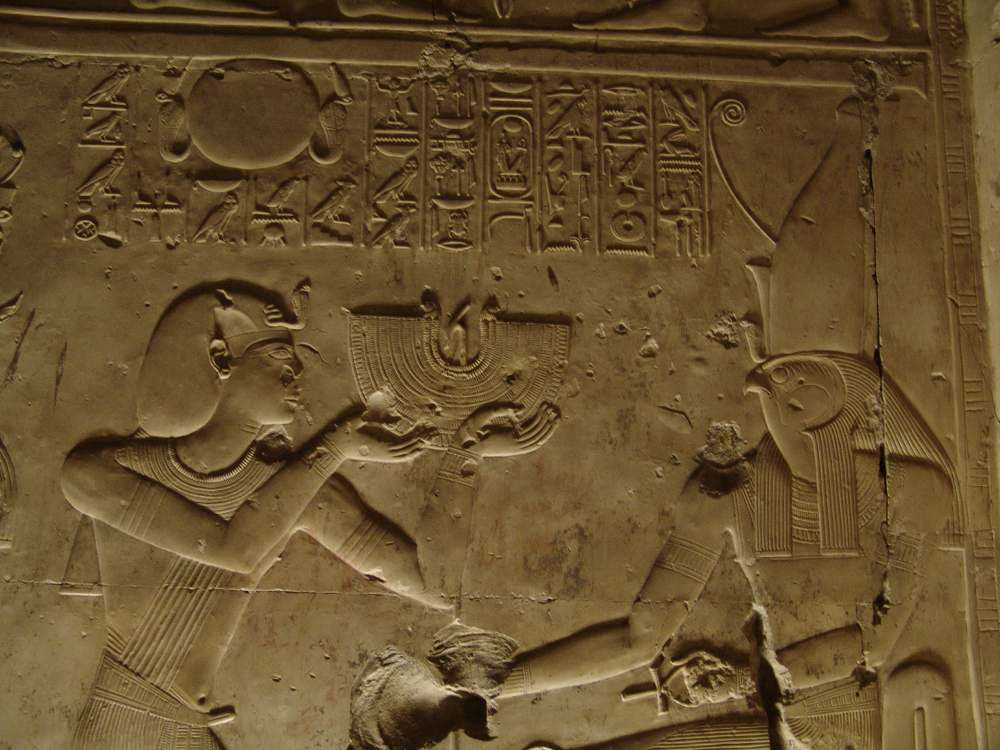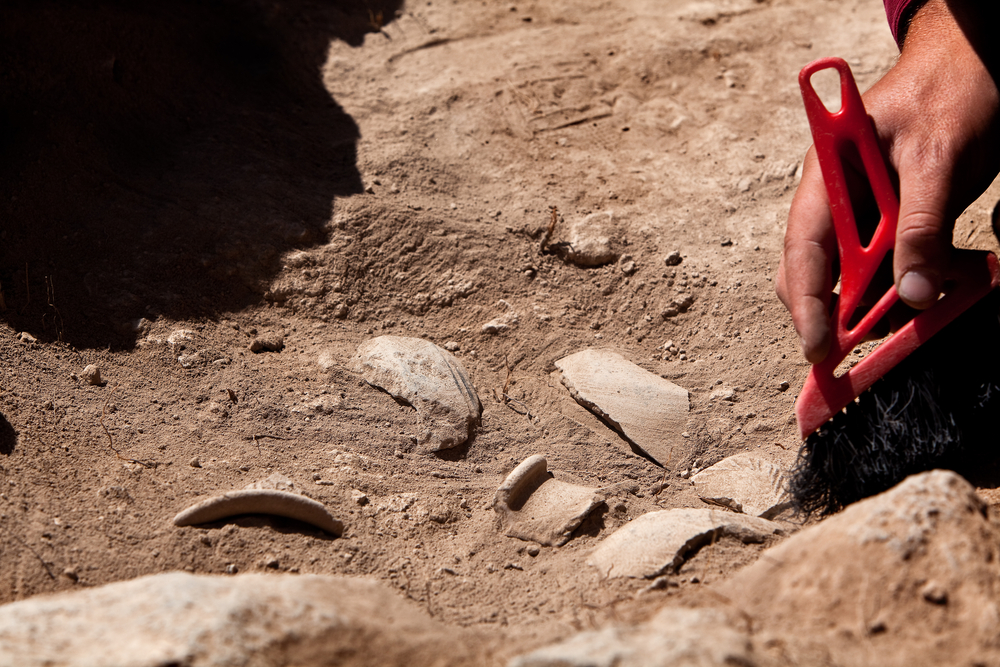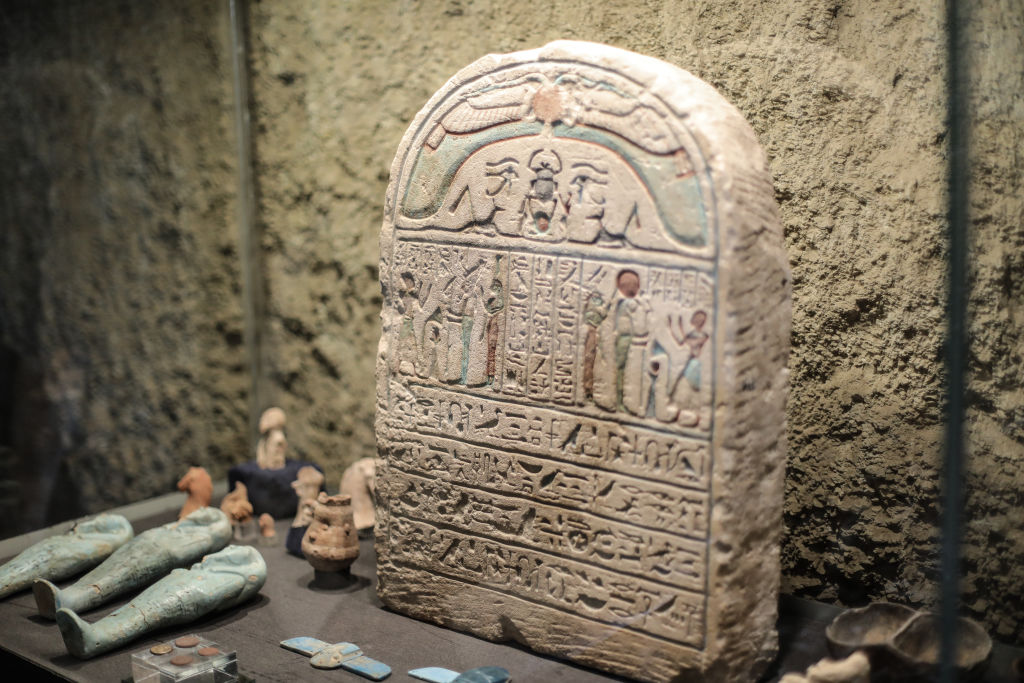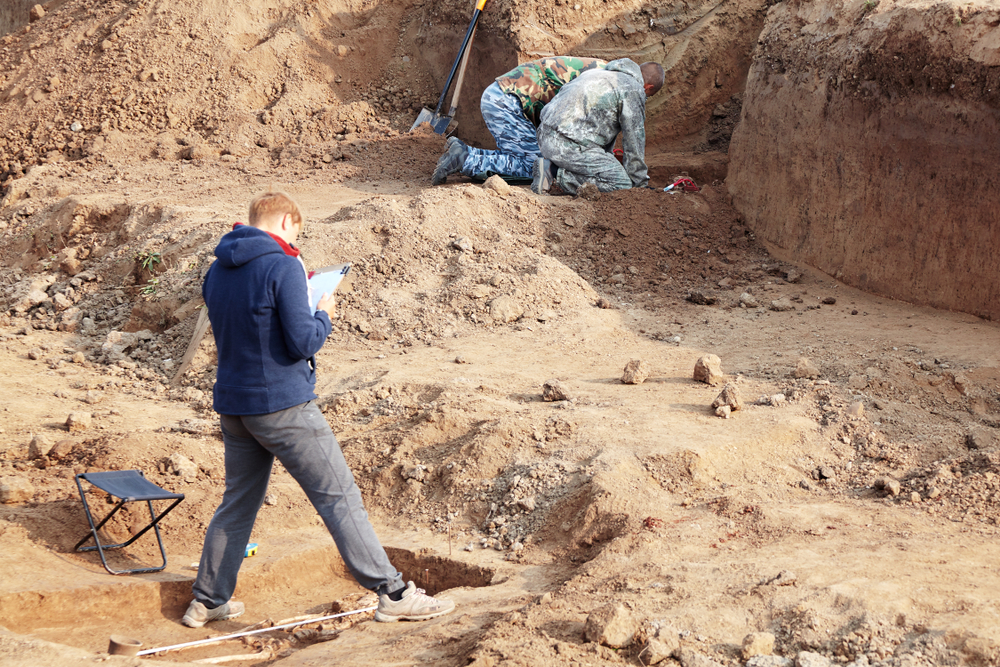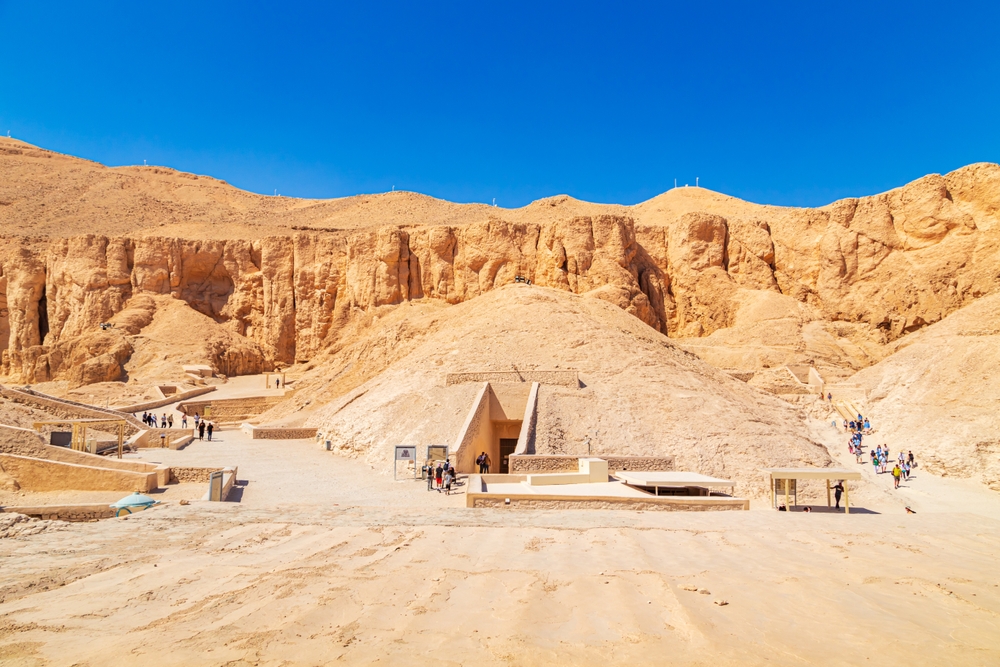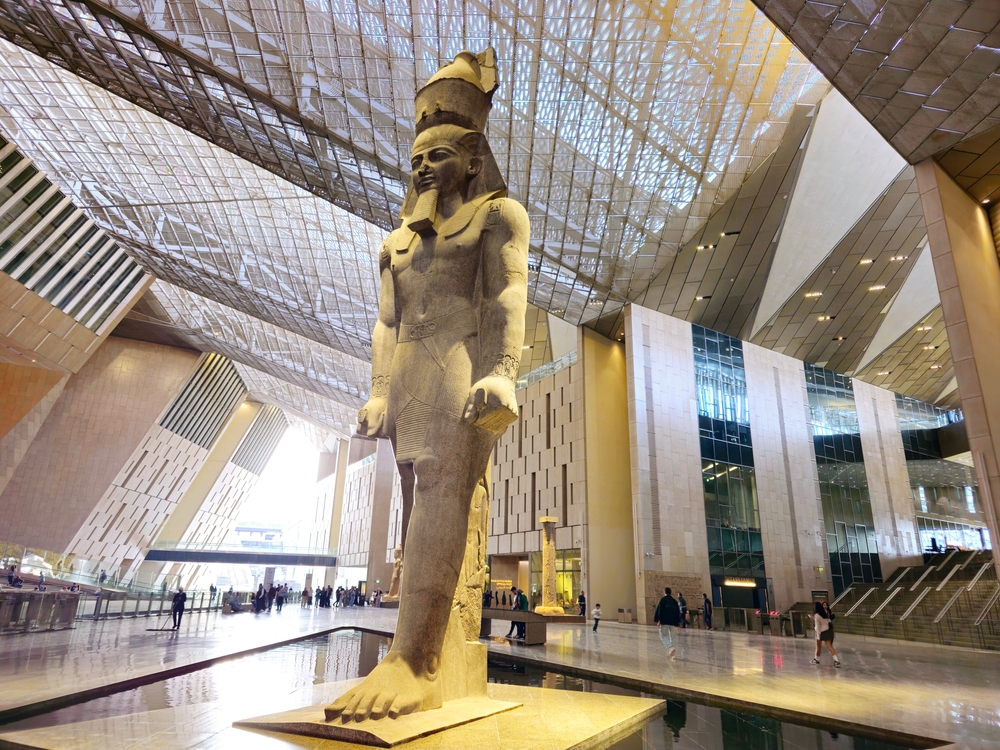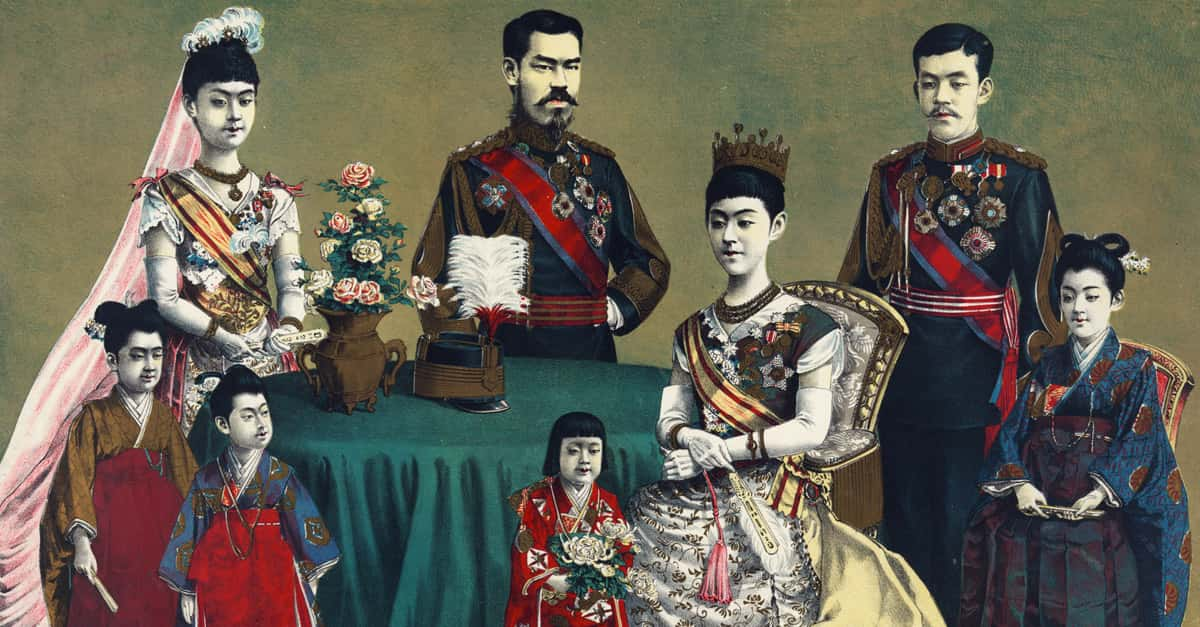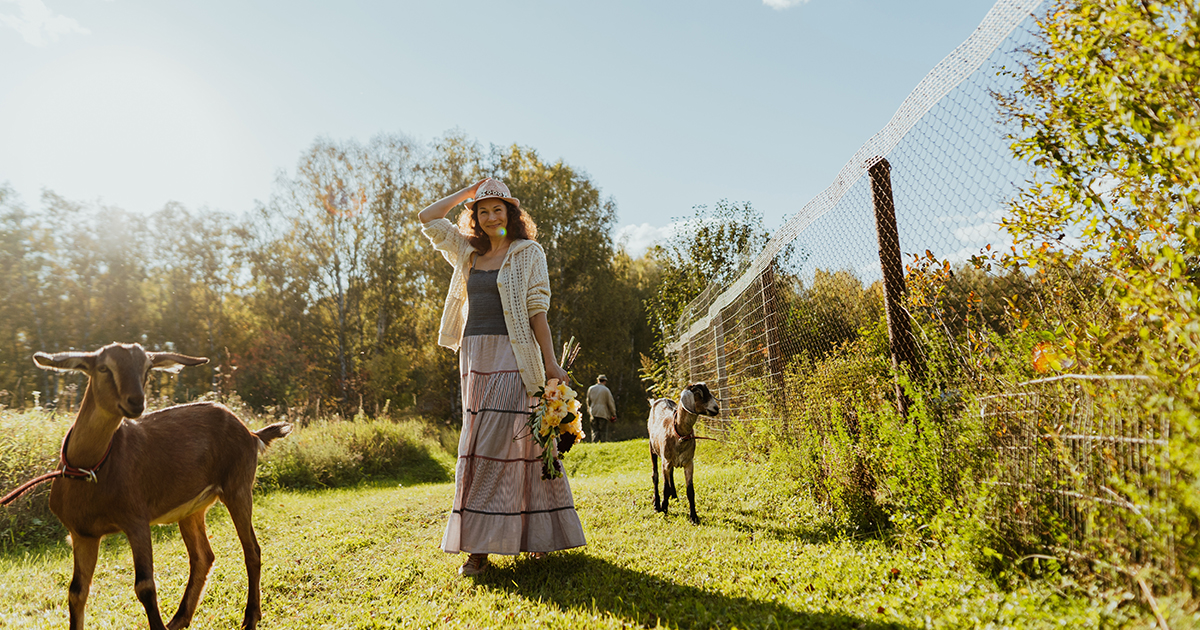The Discovery Of A Lifetime
Archeologists are always discovering new things about human history and culture. But sometimes, they come upon something that reshapes our understanding of the past. The team working on the South Asasif Conservation Project just made their own monumental discovery.
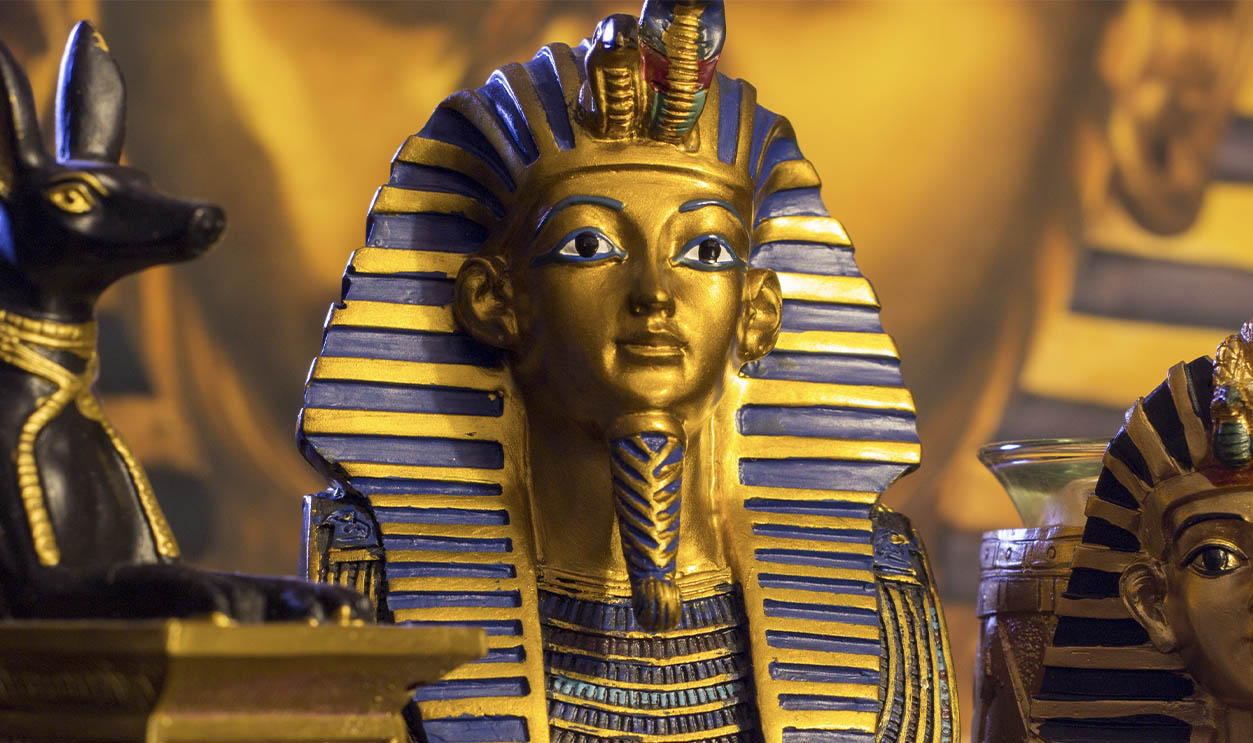
A Surprising Discovery
Earlier in 2024, a tomb was discovered in the South Asasif necropolis, near the temple of Hatshepsut on the West Bank of the Nile, near Luxor.
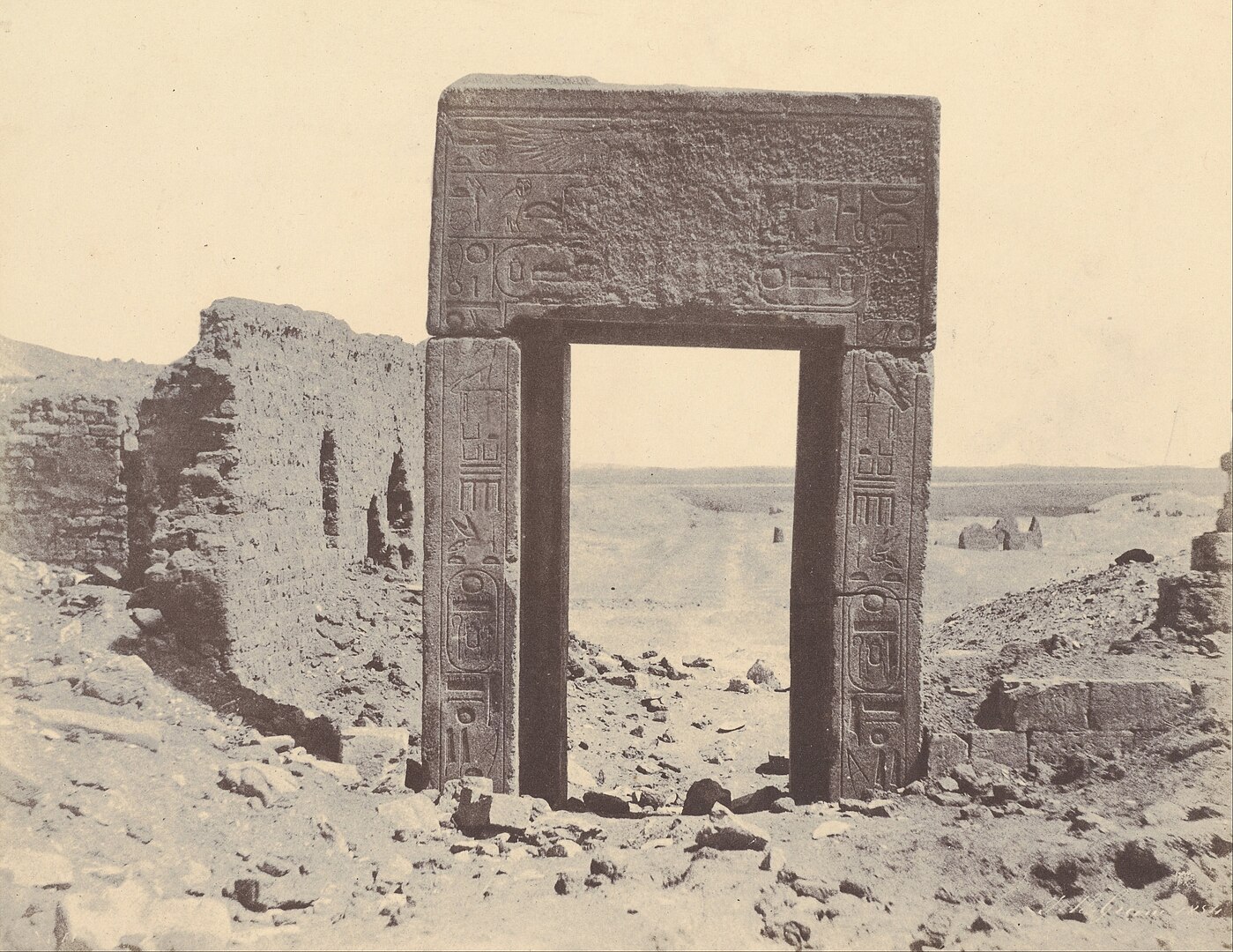 Getty Center, Wikimedia Commons
Getty Center, Wikimedia Commons
The Discovery Requires A Pivot In Focus
The archeological team was working at clearing rubble from the south side of a different structure, the 25th Dynasty tomb of Karabasken. This new discovery came out of the blue, and drove the archeologists into a frenzy of curiosity as they delved into its secrets.
Found In An Established Region
Luxor is the location for some of the most well-known archeological sites worldwide. One of the most famous sites in the area is the Valley of the Kings, where Tutankhamun’s burial chamber was discovered.
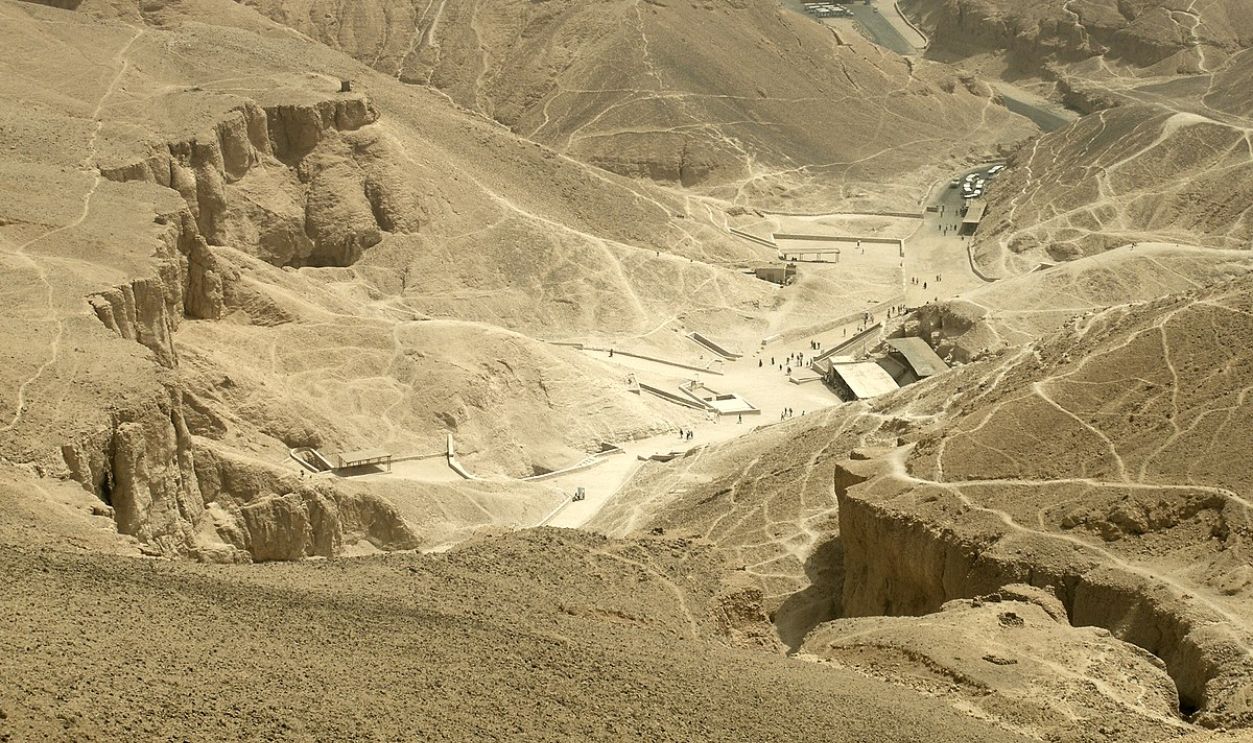 Vyacheslav Argenberg, CC BY 4.0, Wikimedia Commons
Vyacheslav Argenberg, CC BY 4.0, Wikimedia Commons
The Discovery Was A Combined Effort
The tomb was discovered by a field team of the Egyptian-American mission, supervised by Marion Brew. The team has been working on the site for several years, and it continues to surprise.
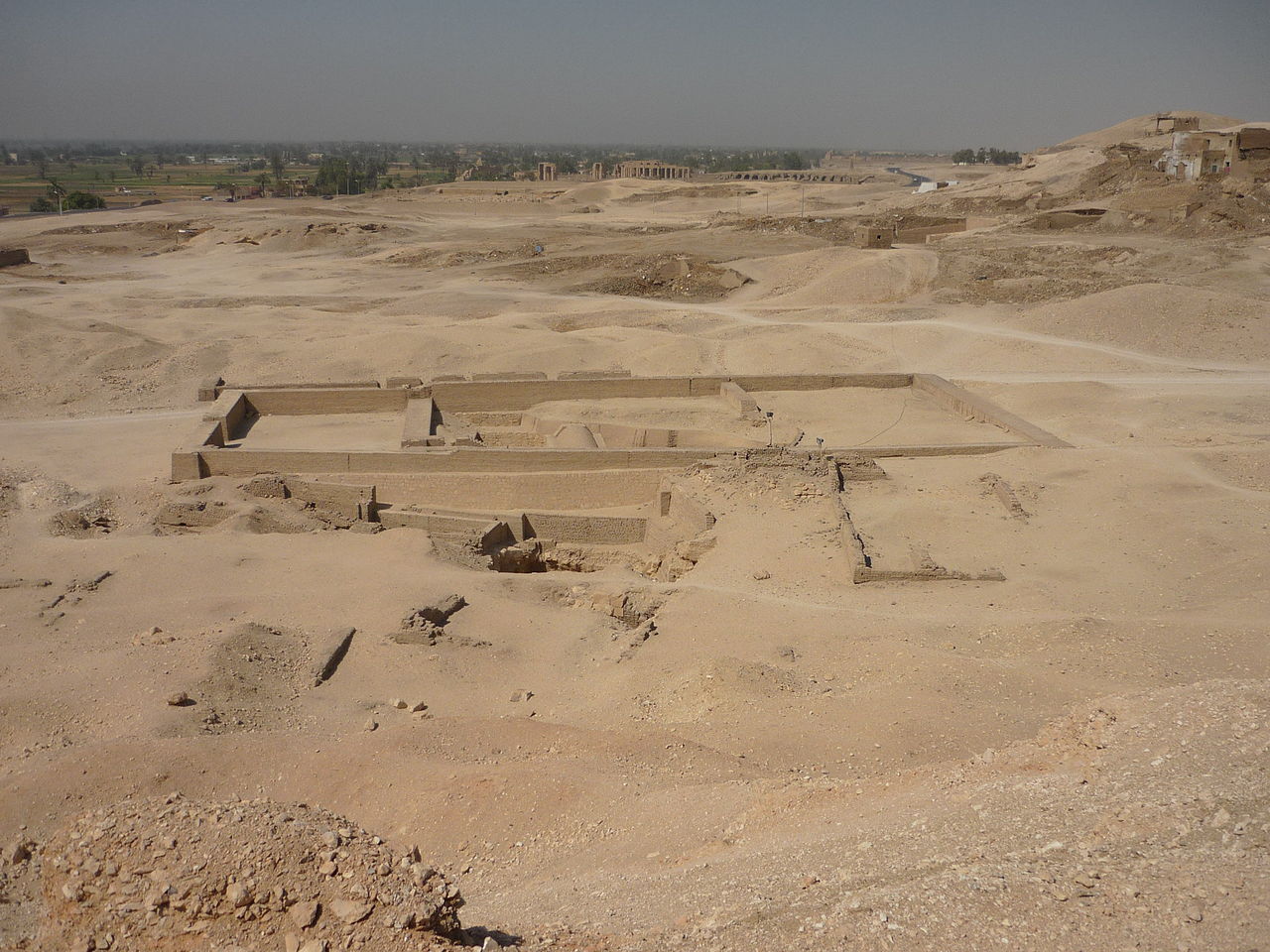 I, Rémih, CC BY-SA 3.0, Wikimedia Commons
I, Rémih, CC BY-SA 3.0, Wikimedia Commons
Not Only A Surprising Location, But A Surprising Time Period
It is the first Middle Kingdom tomb to be discovered in this area, and the archeologists were absolutely shocked by how this reshaped their understanding of the broader archeological site.
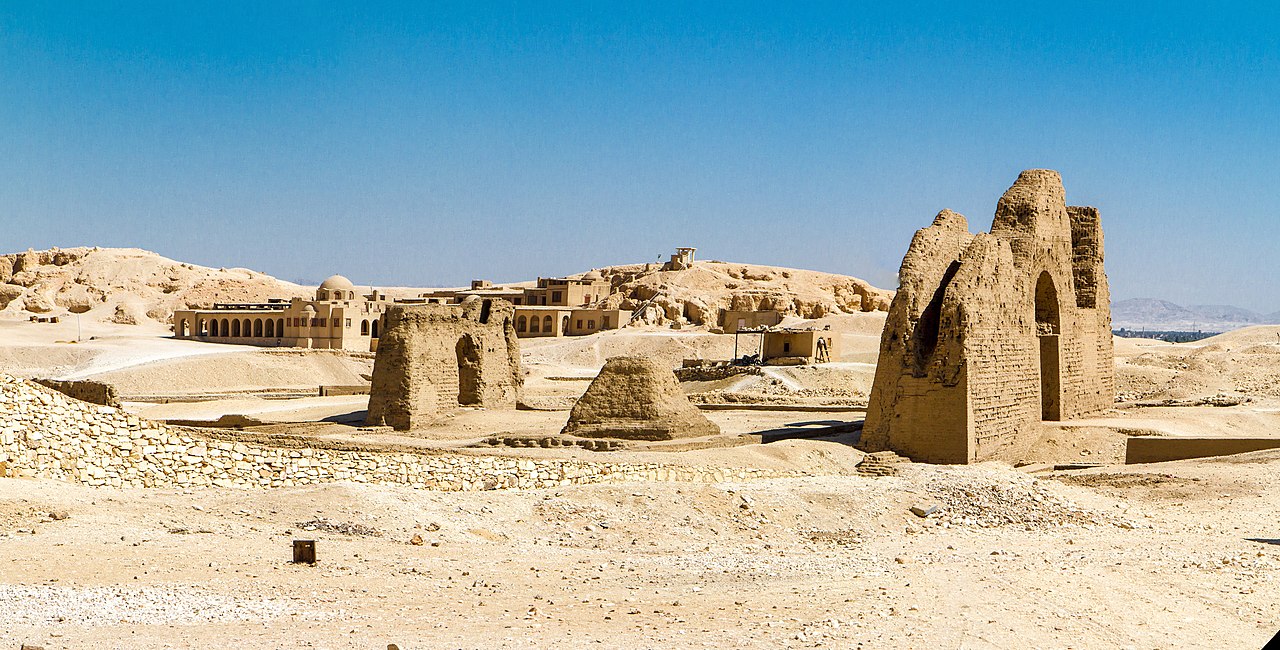 Максим Улитин, CC BY 3.0, Wikimedia Commons
Максим Улитин, CC BY 3.0, Wikimedia Commons
The Contents Laid Bare
These tombs had been sealed for around two millennia, but that didn’t mean it was able to withstand the various impacts of time and the local climate. 2,000 years is a lot of time, after all.
The Damage Narrowed The Potential For Discovery
Most of the graves were impacted by floods, and water damaged the wood coffins and linen coverings. Thankfully, that didn’t mean there wasn’t something to find in the less perishable objects preserved in the site.
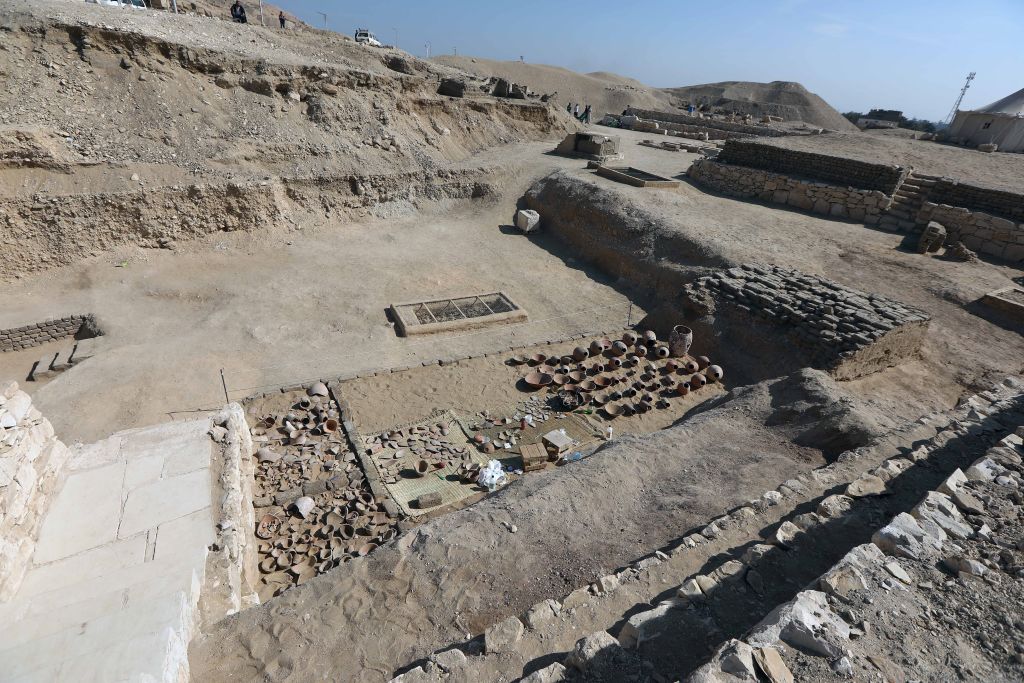 Xinhua News Agency, Getty Images
Xinhua News Agency, Getty Images
A Middle Kingdom Find
They found 11 intact burials in the site, five of which included burial offerings that brought new light to their research into the Middle Kingdom.
The Intentional Placement Of Remains
The bodies were wrapped in linen and placed in wooden coffins, which was the custom for these types of burials, and they were laid out going from north to south.
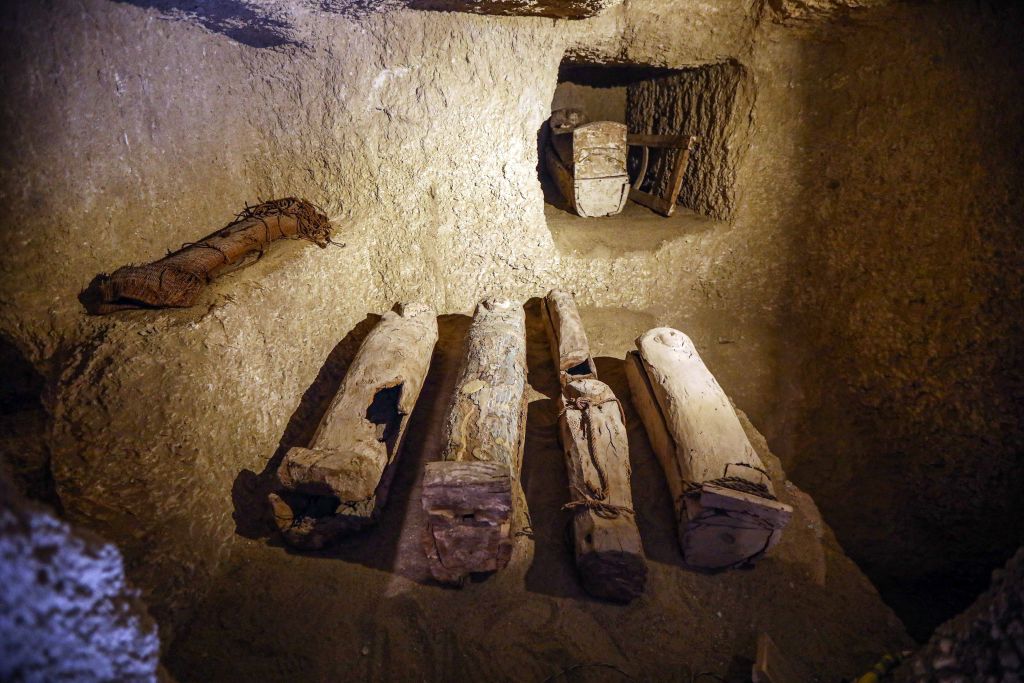 Xinhua News Agency, Getty Images
Xinhua News Agency, Getty Images
Their Final Resting Place
The skeletons were identified as five women, two men, and three children. The majority of the burial offerings were found in the women’s burials.
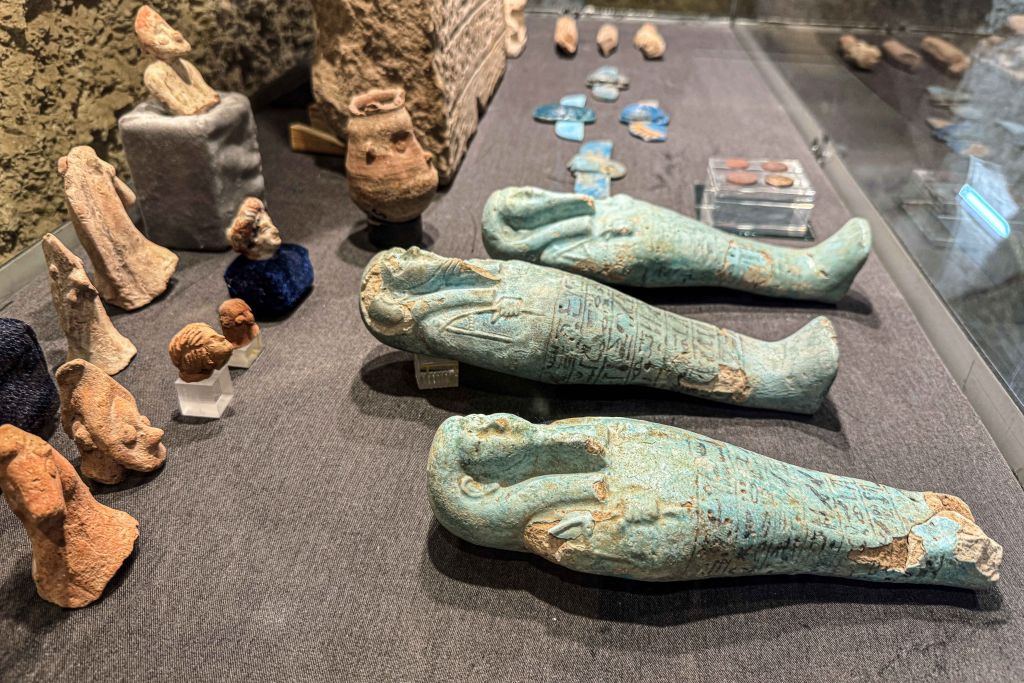 Xinhua News Agency, Getty Images
Xinhua News Agency, Getty Images
The Undisturbed Aspects Of The Tomb
All the burial goods were found in situ—in the same places they were placed thousands of years ago. Then, they made this surprising discovery.
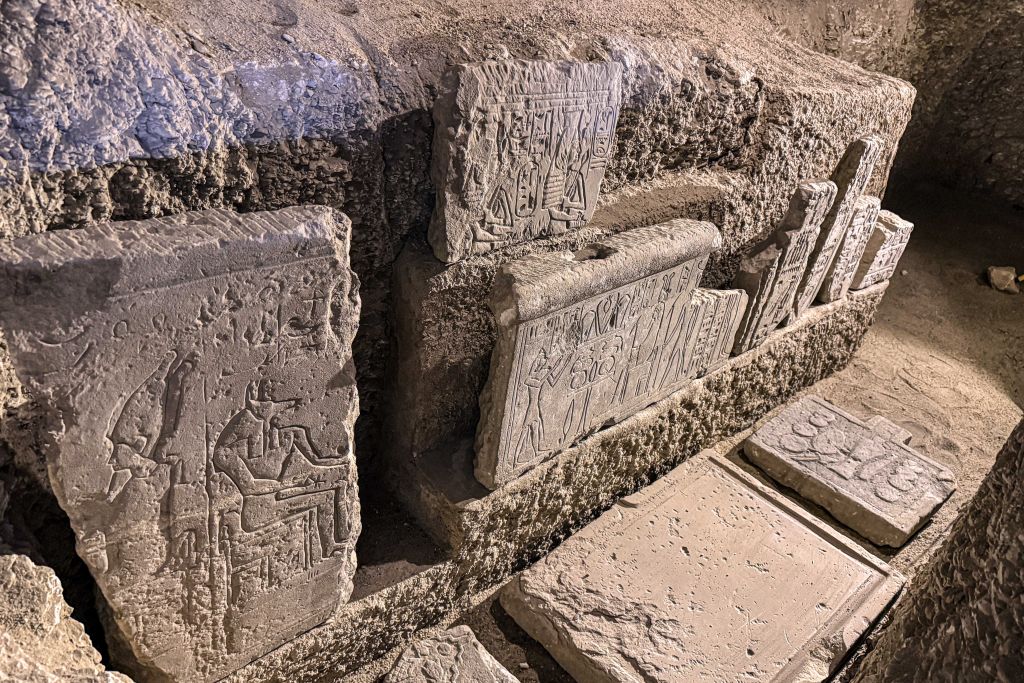 Xinhua News Agency, Getty Images
Xinhua News Agency, Getty Images
Well-Accessorized Afterlife
They found a necklace on one of the men, which was of particular interest to the archeologists. But that wasn’t the only unique aspect of this necklace.
A High Level Of Craftsmanship
The necklace consisted of 40 faience ball beads, with two cylindrical beads framing a hippo head amulet positioned at the back of the necklace. These details add to the uniqueness of this discovery.
Reshaping The Area’s Timeline
The typology of most of the objects dates back to the original burials in the early 12th Dynasty.
This allowed the archaeologists to assume the burial tomb was used for several generations throughout the 12th and 13th Dynasties.
A New Beginning
This discovery firmly establishes the dates of the South Asasif necropolis within the sprawling Middle Kingdom cemeteries of Thebes. This is a shocking amount of time added to the area’s lifespan.
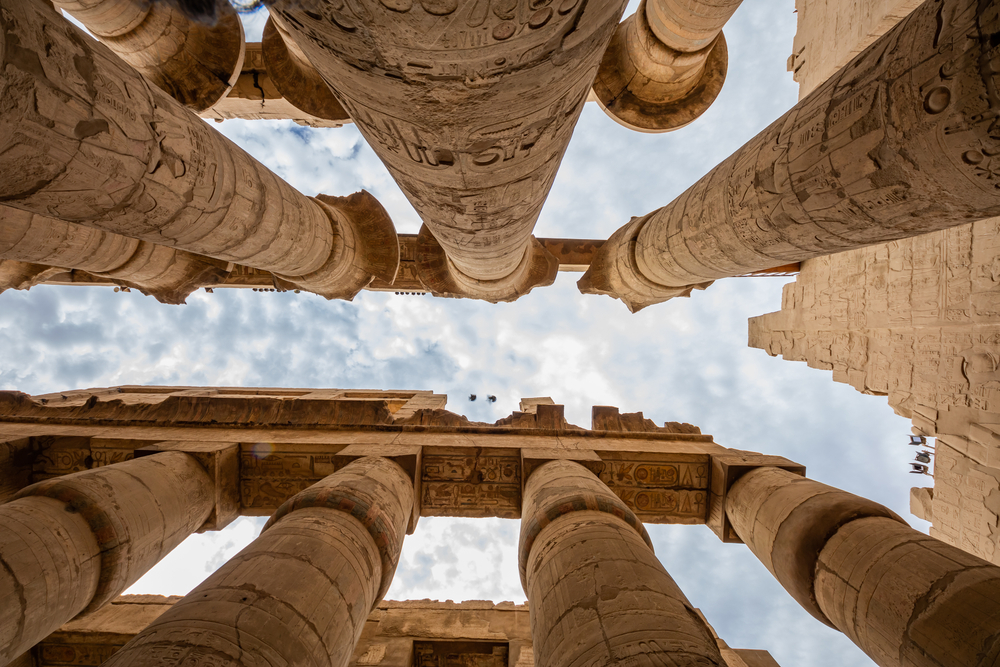 Justin Fotos und Videos, Shutterstock
Justin Fotos und Videos, Shutterstock
The Many Accessories Of Ancient Egypt
The discoveries they made of the women’s burial offerings were no less interesting, and featured a wide variety of objects.
The Variety Of Material Is Surprising
They found several necklaces, with beads made of several different gemstones. They were made of amethyst, carnelian, garnet, blue-green glazed faience (a finely-glazed ceramic), and felspar.
The Curiosity Of The Hippo
Interestingly, many of the pieces of jewelry also featured amulets in the shape of hippopotamus heads. The relevance of this symbol is surprising.
A Symbol Fit For Kings
The hippopotamus represented courage, strength, and power. These qualities were required when combatting one of these immense animals in Ancient Egypt. You might not expect there to be much conflict between humans and hippos, but you’d be wrong!
 Djehouty, CC BY-SA 4.0, Wikimedia Commons
Djehouty, CC BY-SA 4.0, Wikimedia Commons
Different Jewelry For Different Occasions
They also found some other jewelry, like bracelets, armlets, and girdles made of the same stones. These discoveries were split between the women’s burial sites, and each woman had her own burial goods.
The Perks To Finding Them In Situ
Because the long strings of beads were found where they were originally placed, the archeologists were able to restore these necklaces to replicate how they originally looked.
A Beetle For Each Hand
They also found rings featuring scarab beetles, one of carnelian and the other of amethyst. These decorative accessories weren’t the only things they found.
Mirror, Mirror, Found In The Tomb
Two of the burials also contained copper or copper alloy mirrors. Both mirrors had beautifully carved handles made of ivory. These carvings also provided the archeologists with additional information about the site and the time period.
The Handle Tells A Story
One of the mirrors had a lotiform handle, meaning it had carvings that looked like a lotus bloom on the handle. But the other discovery was more significant.
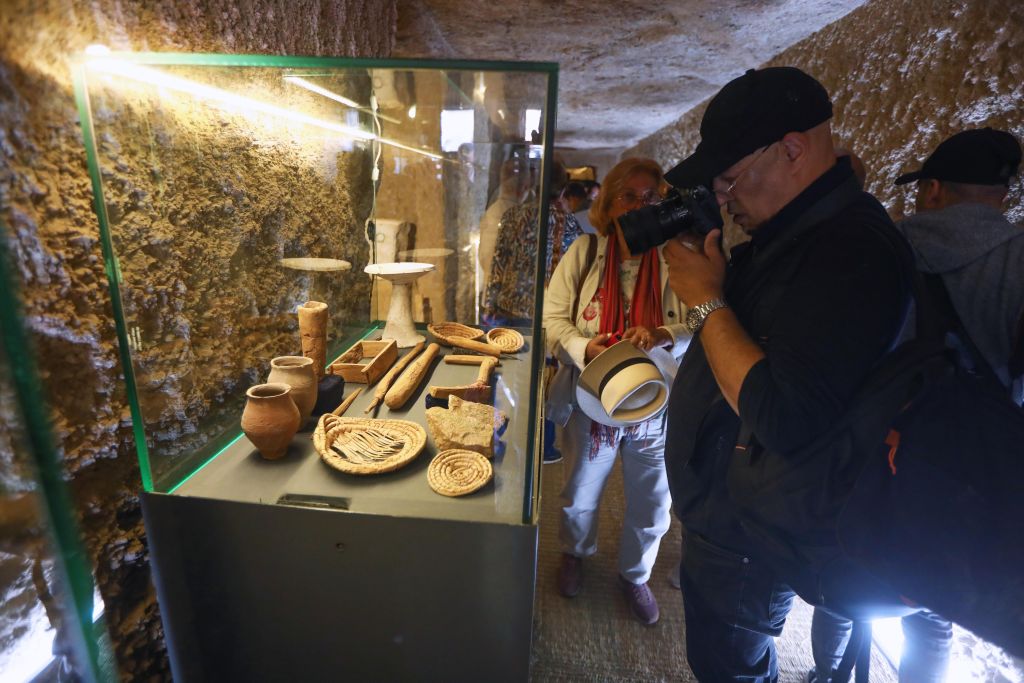 Xinhua News Agency, Getty Images
Xinhua News Agency, Getty Images
The Power Of A Deity
The other mirror had a handle that depicted the Ancient Egyptian goddess Hathor. It had four of the goddess’s heads, representing the four different parts of her domain: women, fertility, love, and the sky.
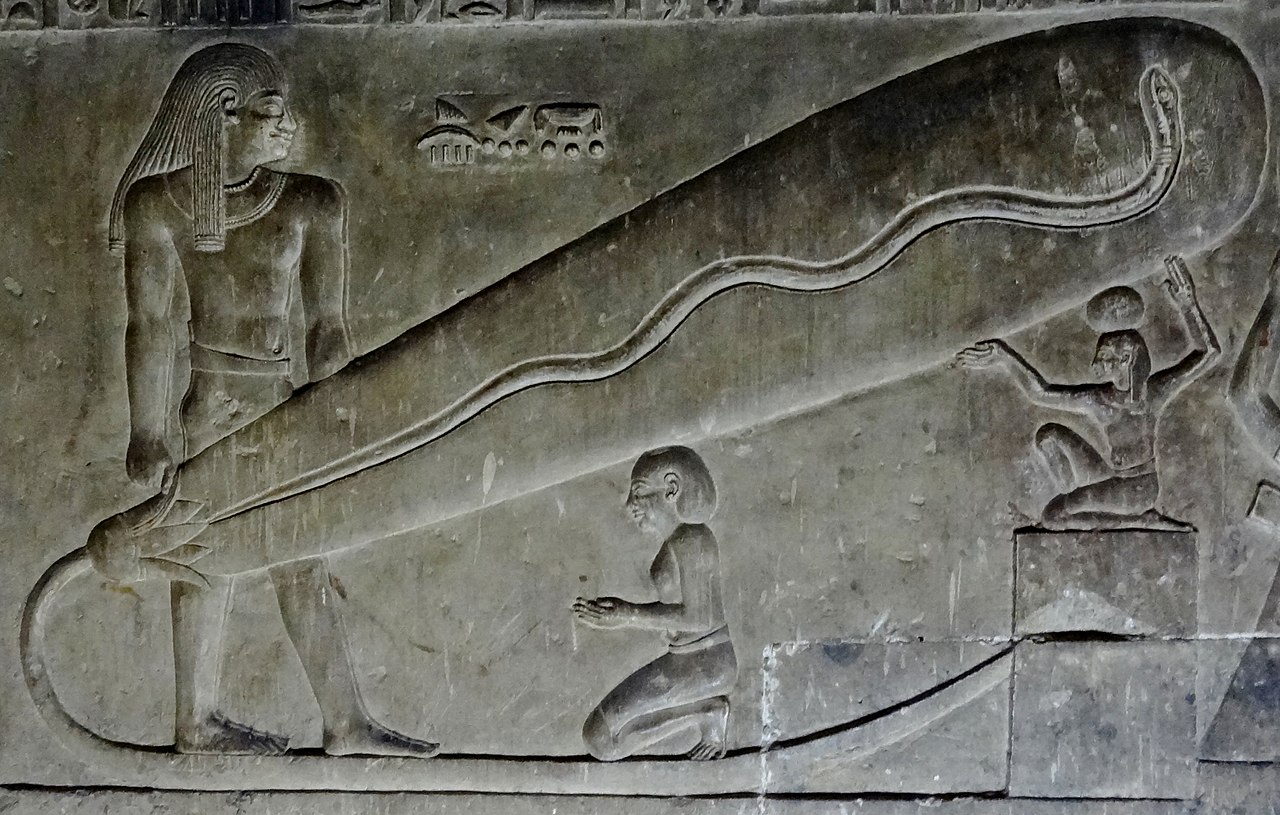 Olaf Tausch, CC BY 3.0, Wikimedia Commons
Olaf Tausch, CC BY 3.0, Wikimedia Commons
Dedicated To Nature And The Gods
They also found a collection of stone figurines, both carved to look like animals and other Ancient Egyptian deities. These discoveries led one of the archeologists to make a shocking conclusion.
A Shocking Momento For Creating Life
Additionally, they found a green-blue glaze faience figure with truncated legs, thought to be emblematic of fertility. In her original state, the figure also had hair made of almost 4,000 mud beads, which they found scattered around her.
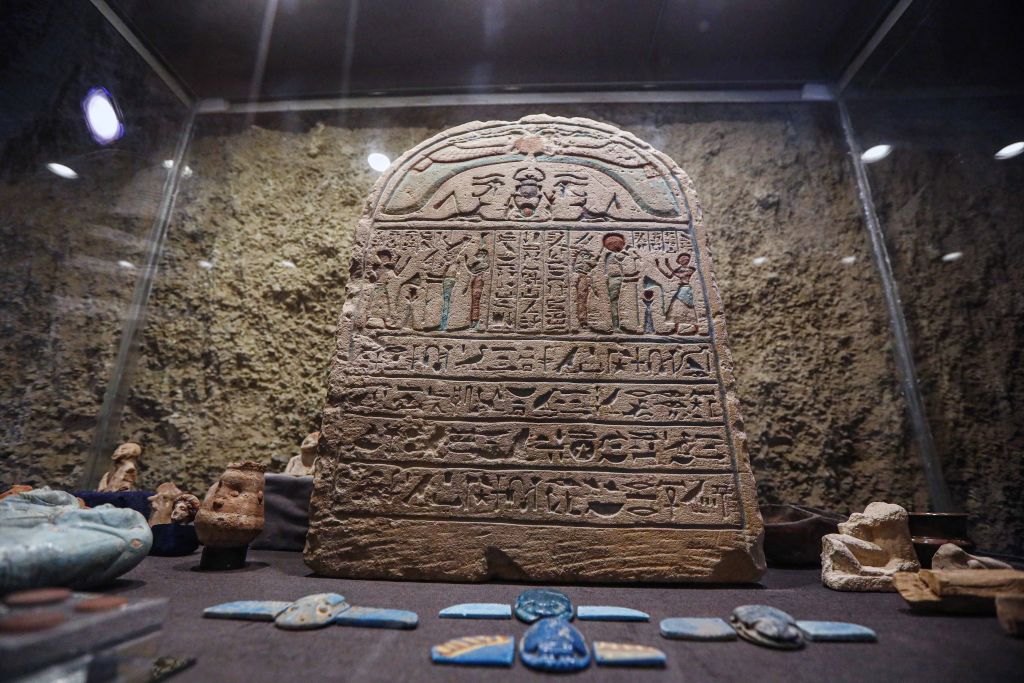 Xinhua News Agency, Getty Images
Xinhua News Agency, Getty Images
Another Surprising Artifact Is Served Up
Another notable artifact they discovered is an offering tray, featuring representations of a bull’s head, ribs, leg, a loaf of bread, and other offerings. This tray has specific associations that contribute to bringing new information to light.
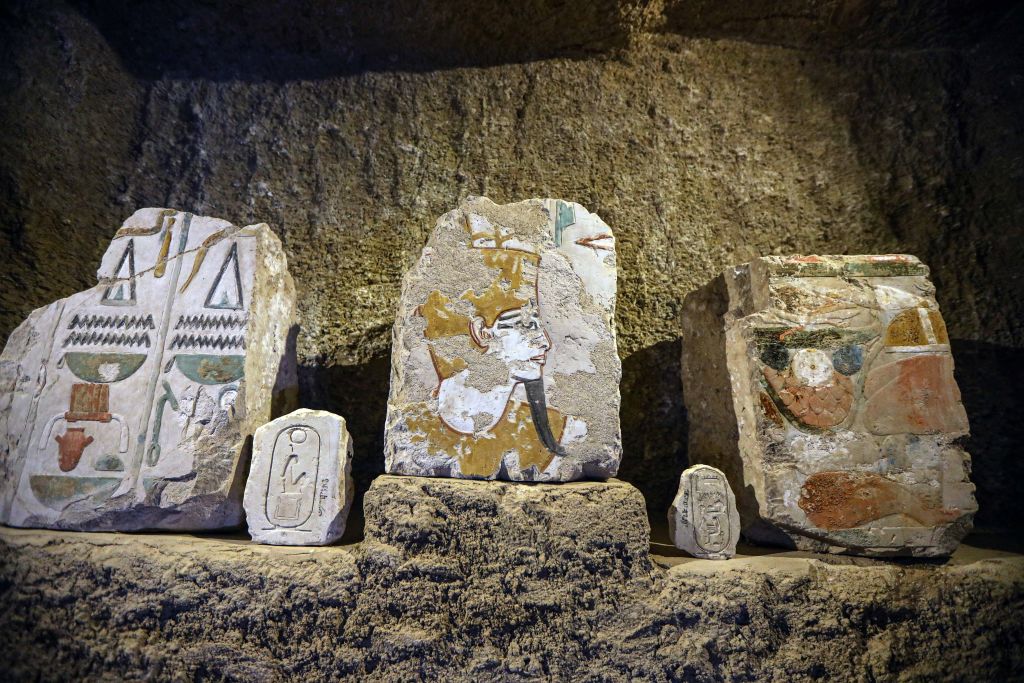 Xinhua News Agency, Getty Images
Xinhua News Agency, Getty Images
Tasting History
The tray is linked with burials and burial rites. By depicting these various items on its facade, archeologists can compare and contrast this item with others of its ilk to learn more about ancient burial rites.
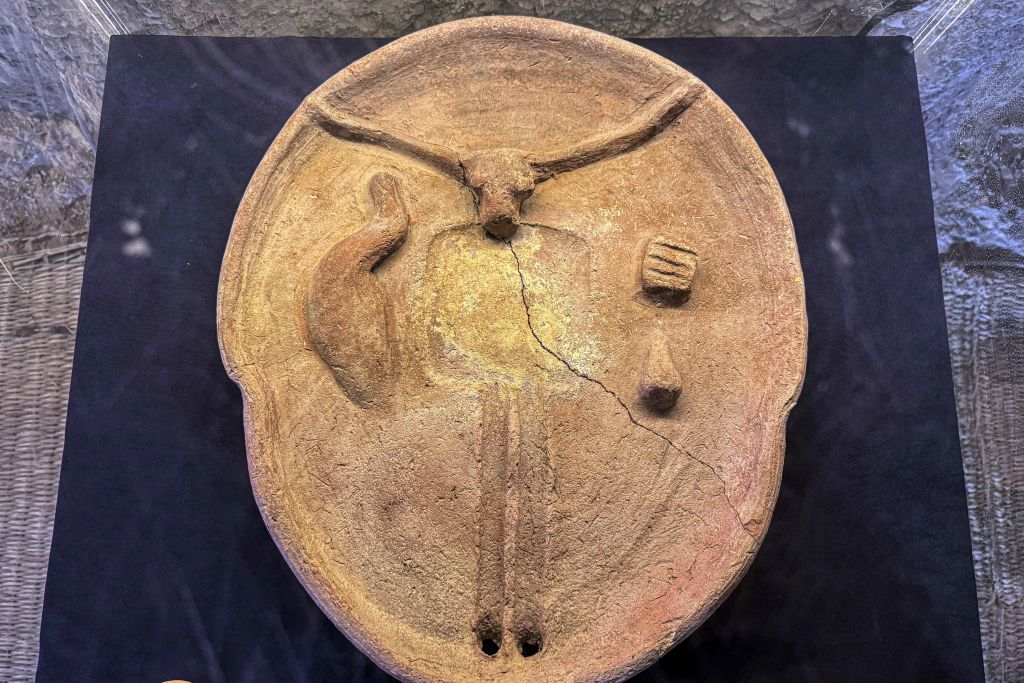 Xinhua News Agency, Getty Images
Xinhua News Agency, Getty Images
A Demonstration Of Ancient Craft
Dr Katherine Blakeney, the lead American archeologist at the Luxor excavations, made this statement on their discovery: “Such craftsmanship underscores the cultural and artistic sophistication of the Middle Kingdom”.
Creating A Holistic Understanding Of The Past
The discovery of these 11 burials contributes a lot to the archeologists’ understanding of the Middle Kingdom and the 25th Dynasty. But it also adds to their understanding of these two specific facets of history.
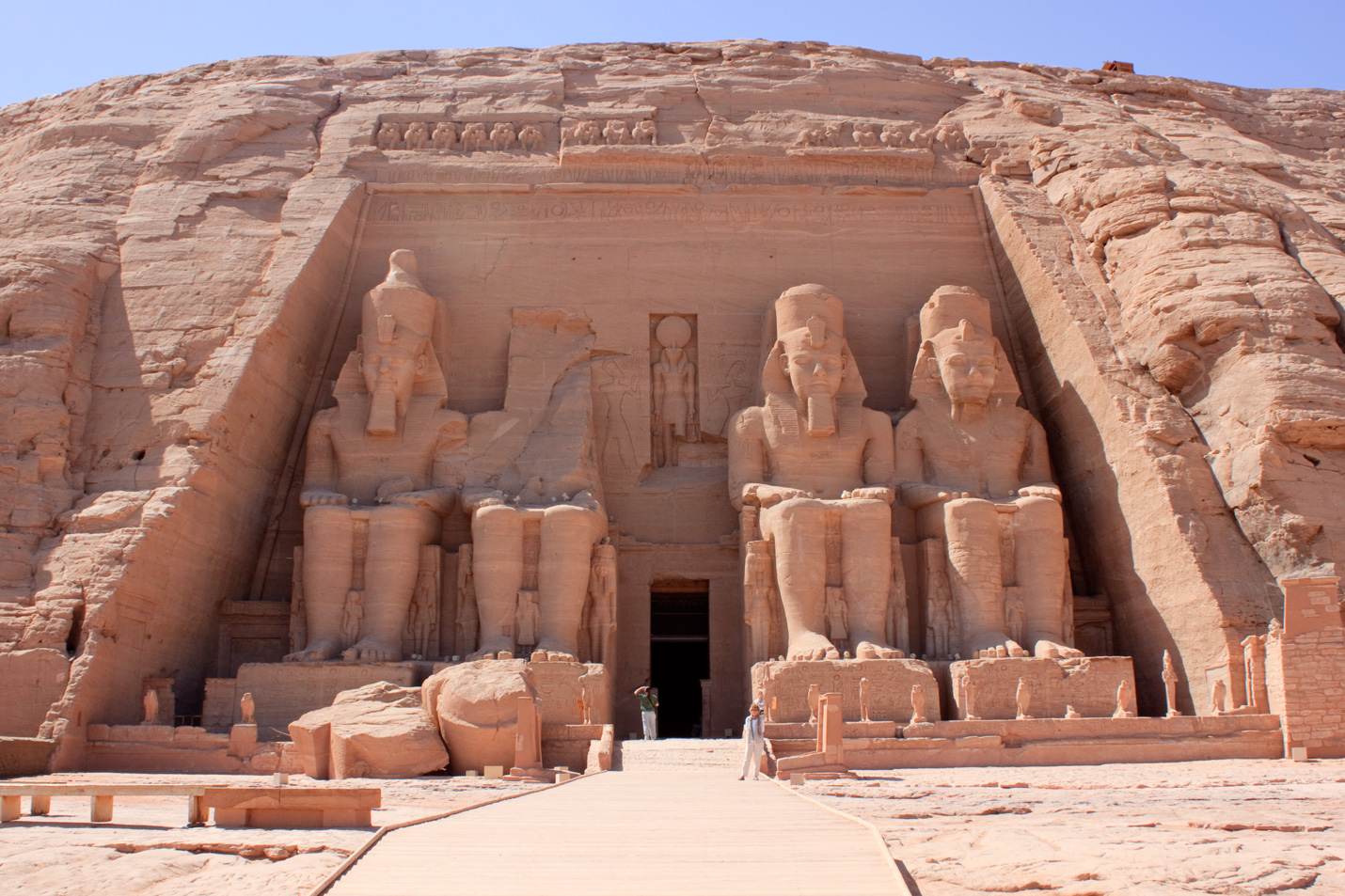 MrSnooks, CC BY-SA 2.0, Wikimedia Commons
MrSnooks, CC BY-SA 2.0, Wikimedia Commons
Funerary Rites And Burial Customs
The discoveries are especially important to the understanding of ancient burial practices and rituals in Thebes and the Middle Kingdom. But that’s not all.
The Eternal Impact Of Art
They add to their knowledge of art and culture during the time that the deceased were alive. Dr Katharine Blakeney referred to the quality of the collection as “exquisitely crafted jewelry well preserved in situ”.
Placing History In Context
The Secretary-General of the Supreme Council of Antiquities, Mohamed Ismail Khalet, stated that this new site adds important historical context to the existing excavations and discoveries. He has high hopes for what they can continue to discover.
An Ongoing Project
The archeological team is continuing their exploration of the necropolis and the ruins in the area, in the hopes that they can keep adding to their increasing knowledge of the Middle Kingdom’s influence on the 25th Dynasty.
Modern Egypt Reaps The Benefits
As for modern Egypt, these sorts of discoveries come at an opportune time. They hope that these discoveries will help boost tourism to the country and the area.
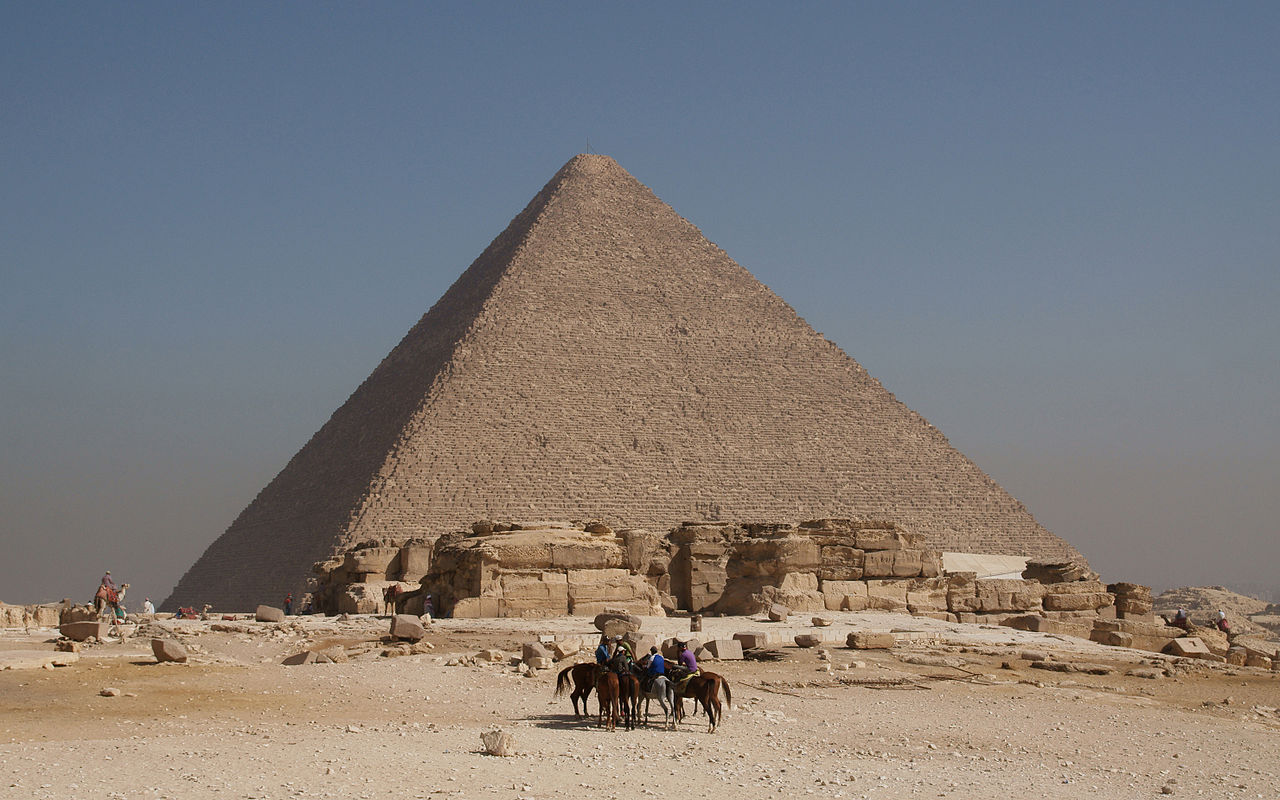 kallerna, CC BY-SA 3.0, Wikimedia Commons
kallerna, CC BY-SA 3.0, Wikimedia Commons
Rebuilding And Creating Something New
After the COVID-19 pandemic and years of political unrest, there is hope that this discovery will have a long-lasting impact on Luxor moving forward. And that isn’t the only impact this discovery has.
Luxor Is Rich In Ruins
The recent discoveries really cement Luxor’s position as having “unique archaeological importance”. This is great for the local area, as it draws both tourists and more potential for archeological projects.
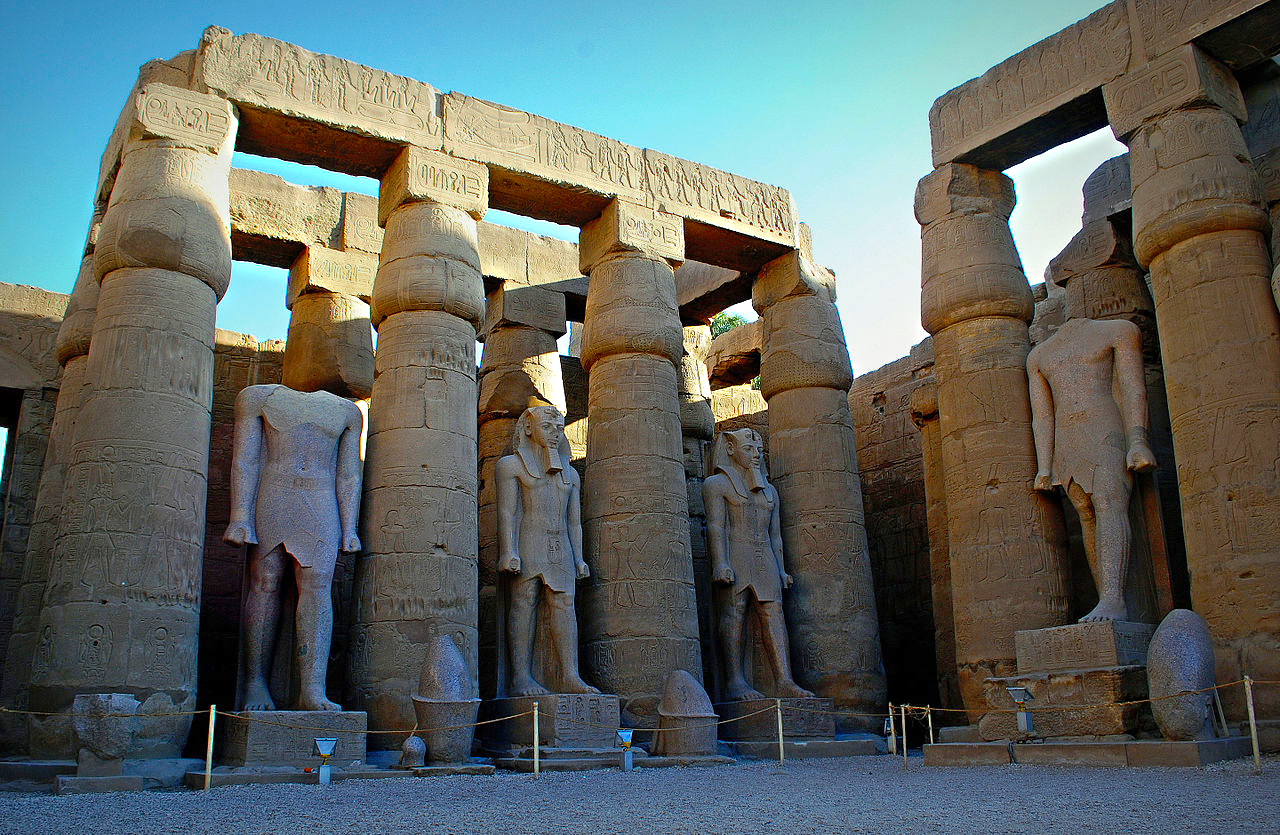 Mohammed Moussa, CC BY-SA 4.0, Wikimedia Commons
Mohammed Moussa, CC BY-SA 4.0, Wikimedia Commons
A New Home For Old Things
This won’t be the only endeavor Egypt pursues in an effort to attract tourism. They recently opened the Grand Egyptian Museum near the Giza Pyramids in October, which contains 12 halls of ancient artifacts.

